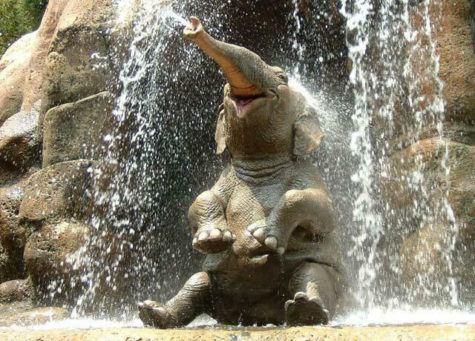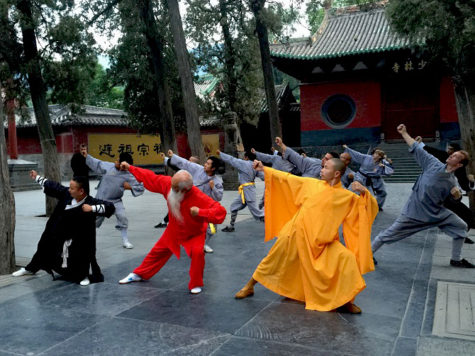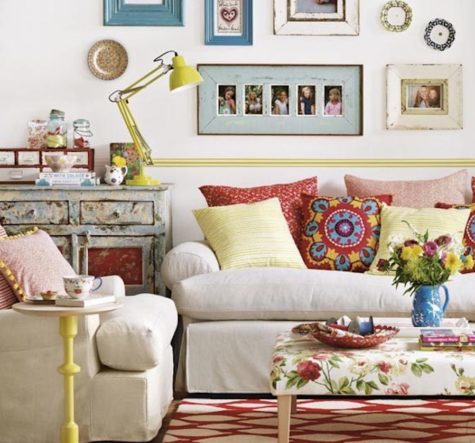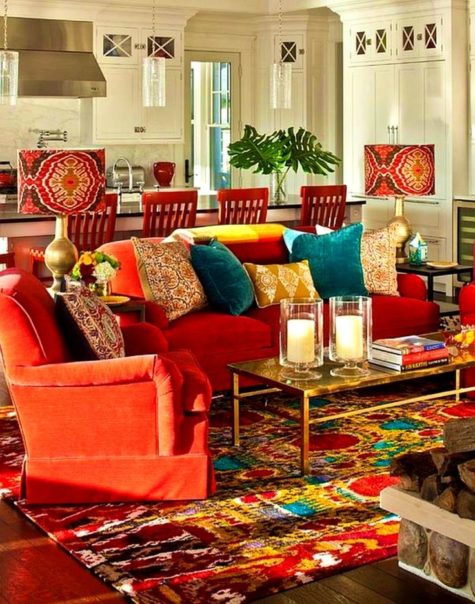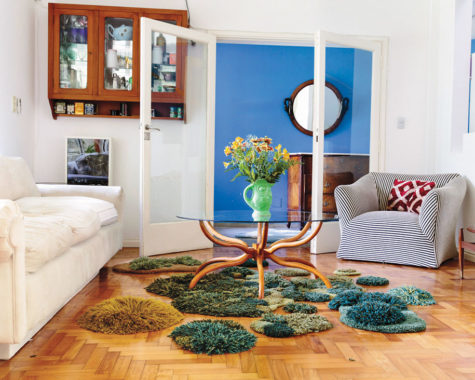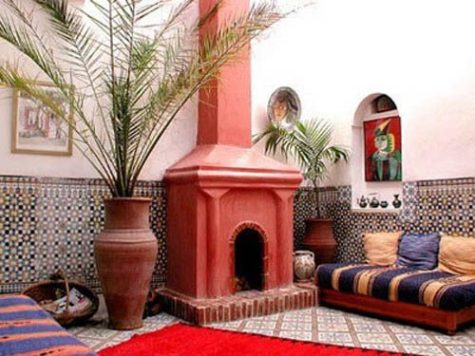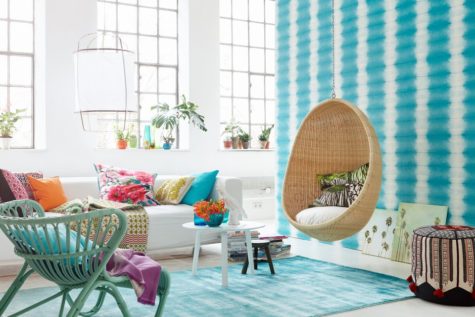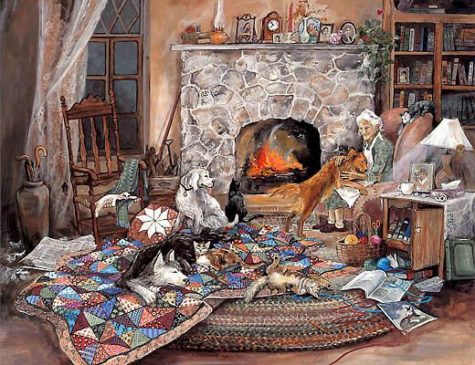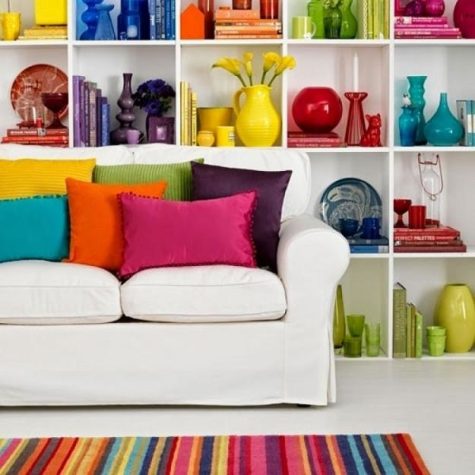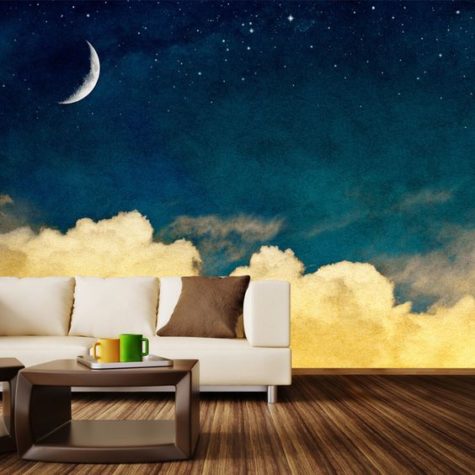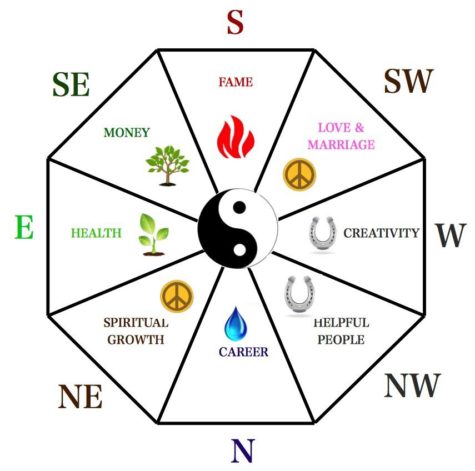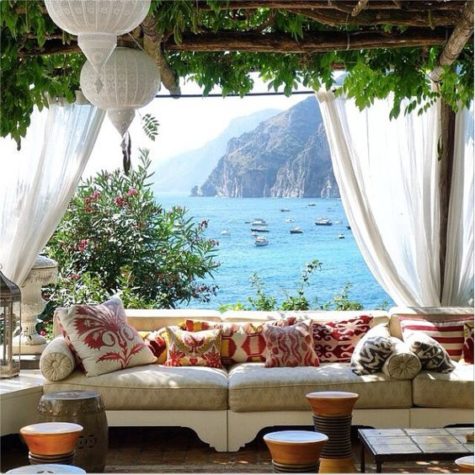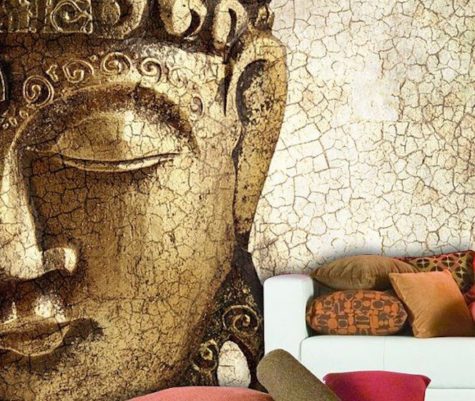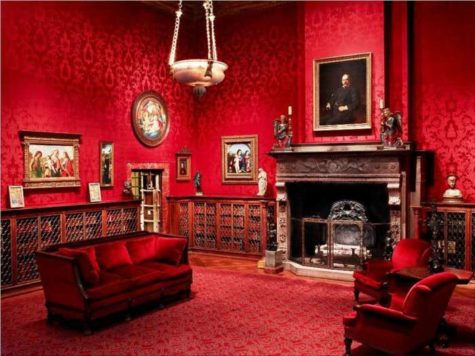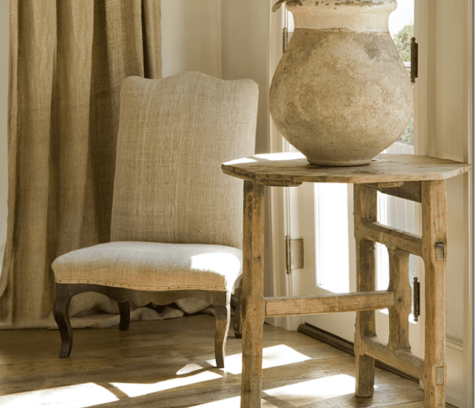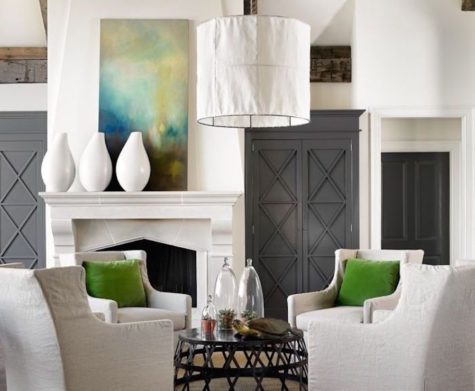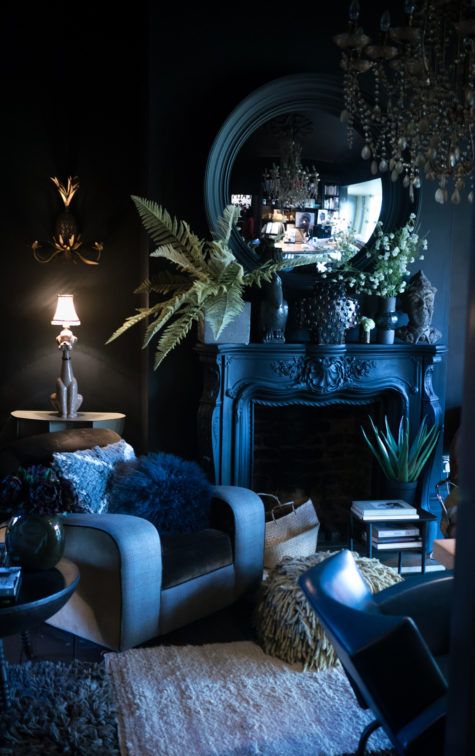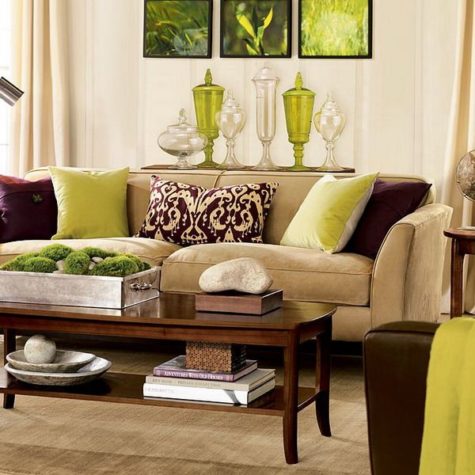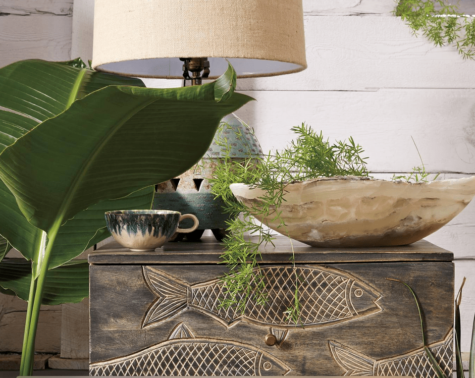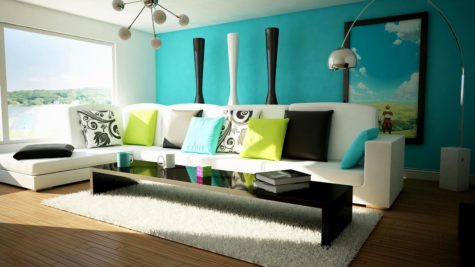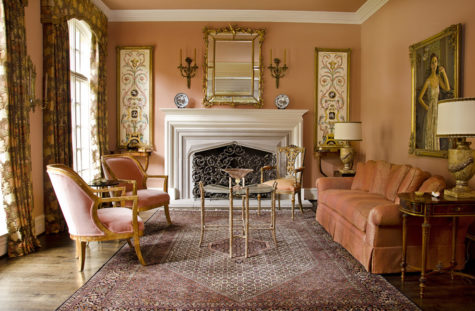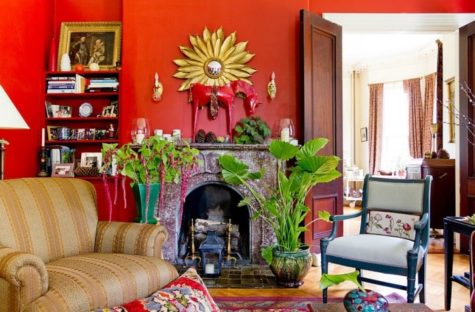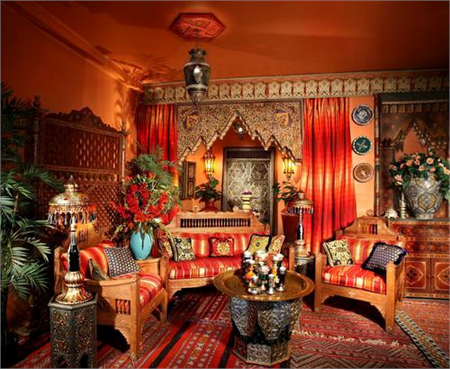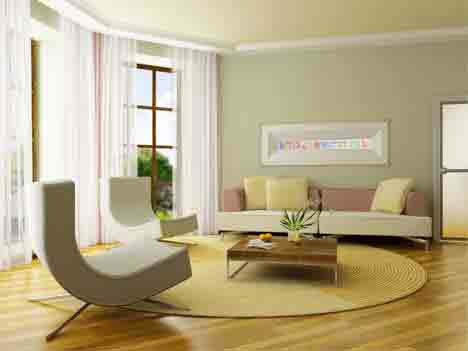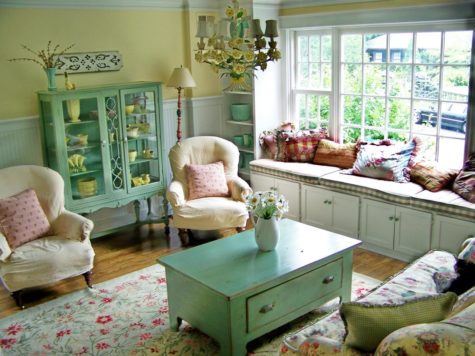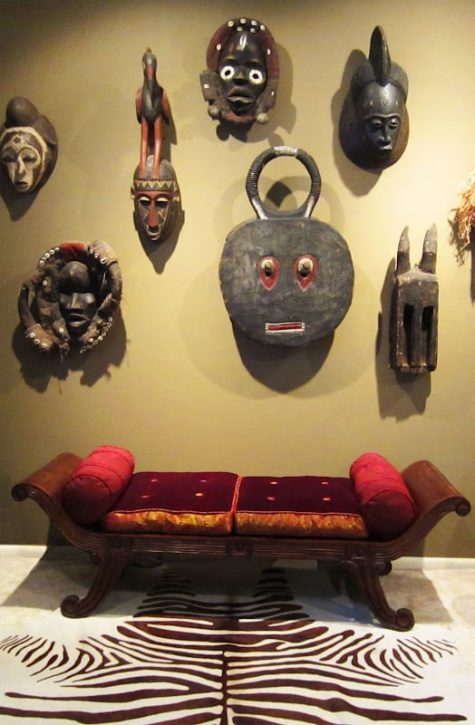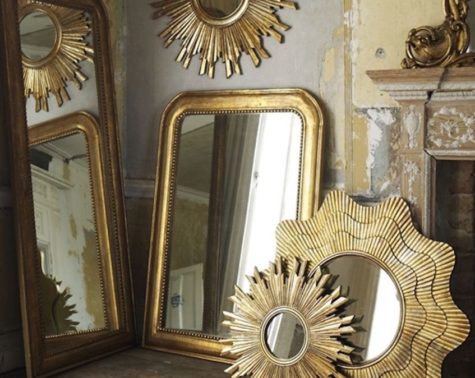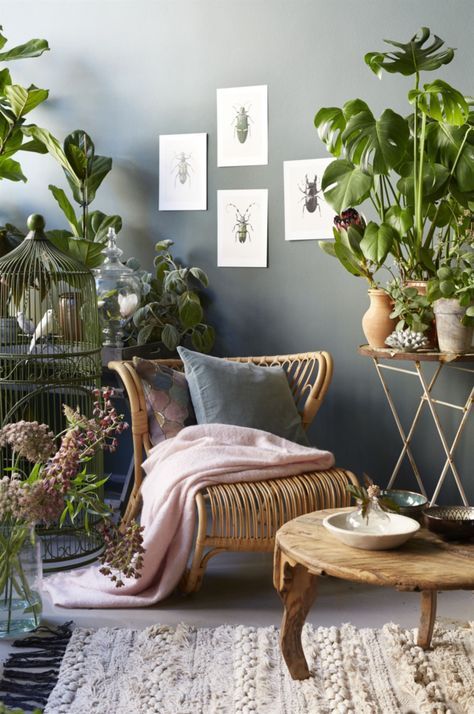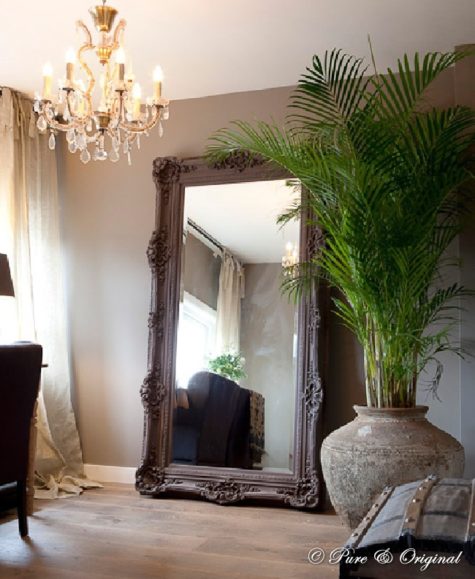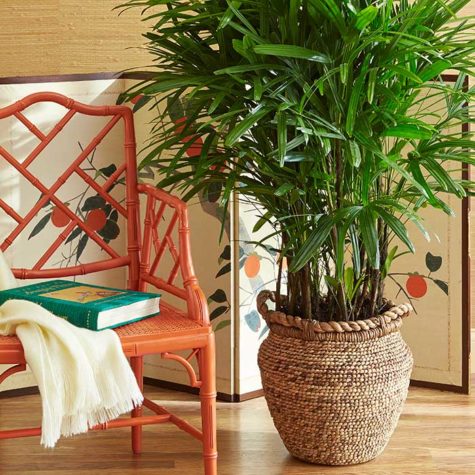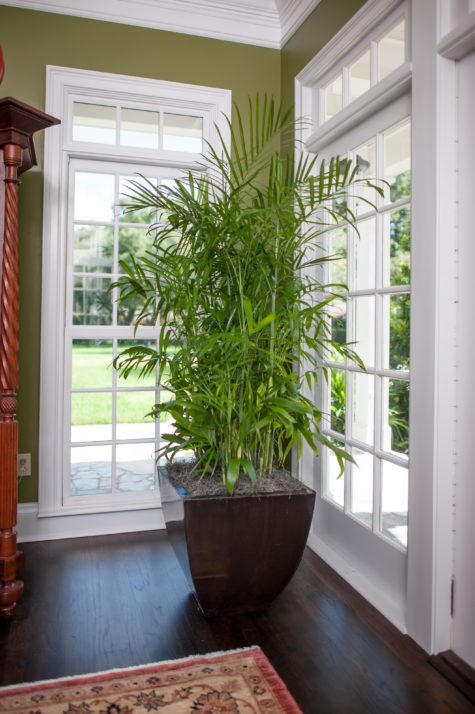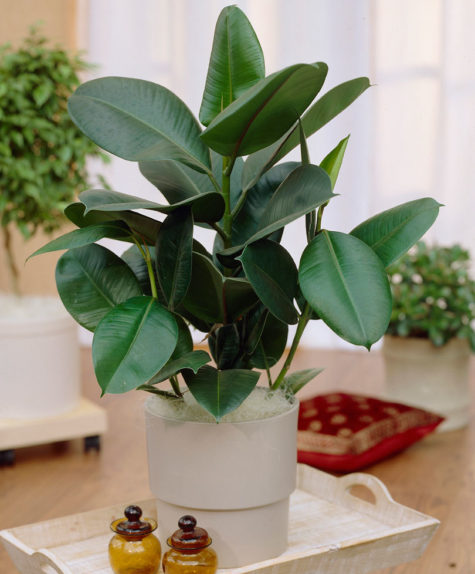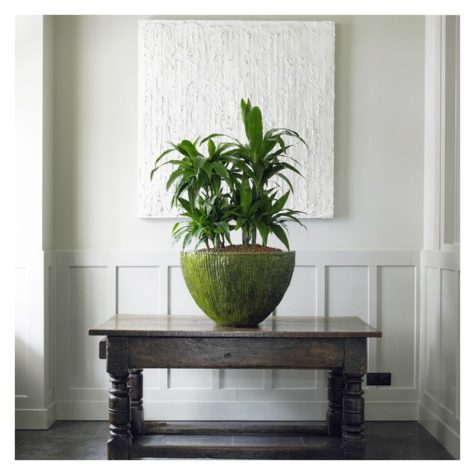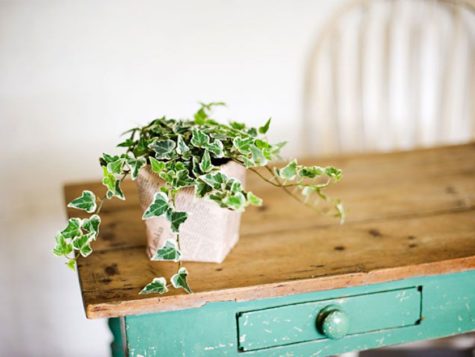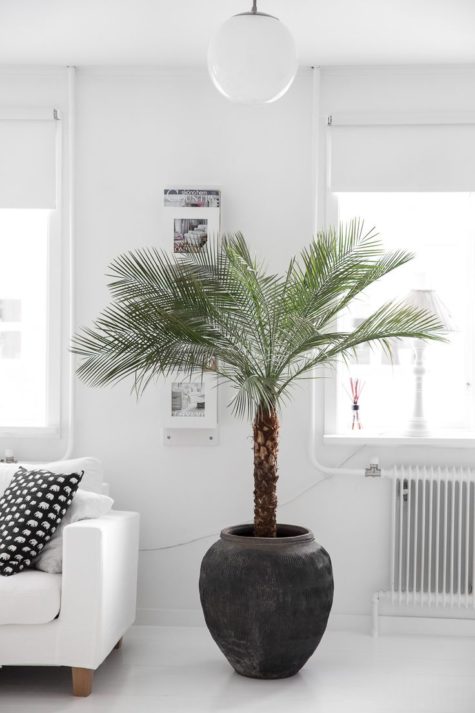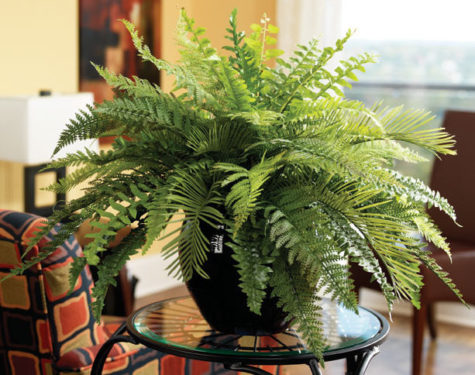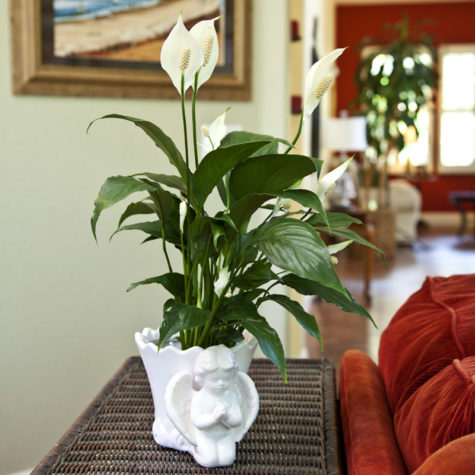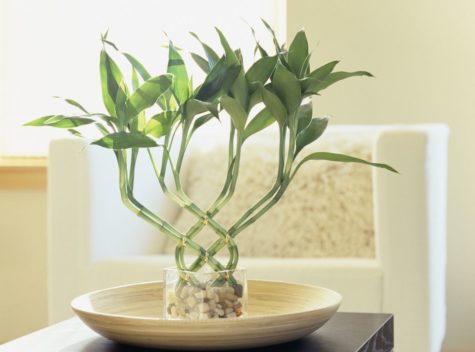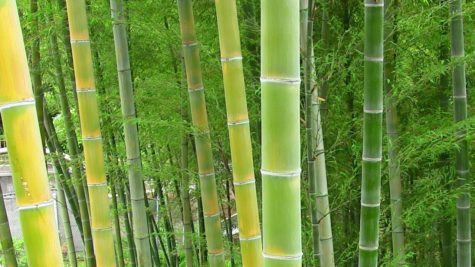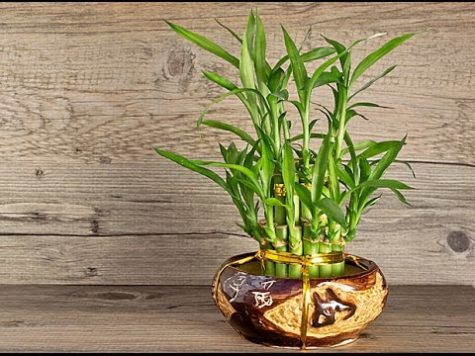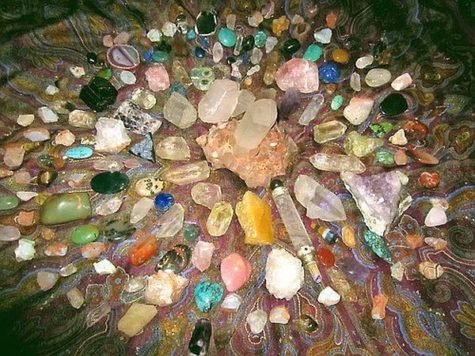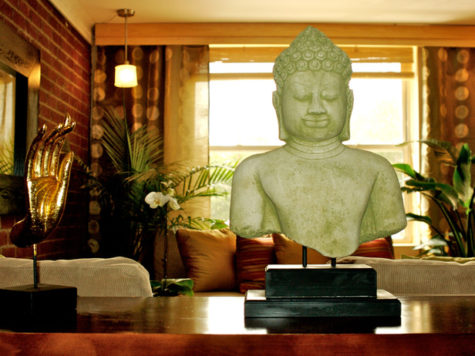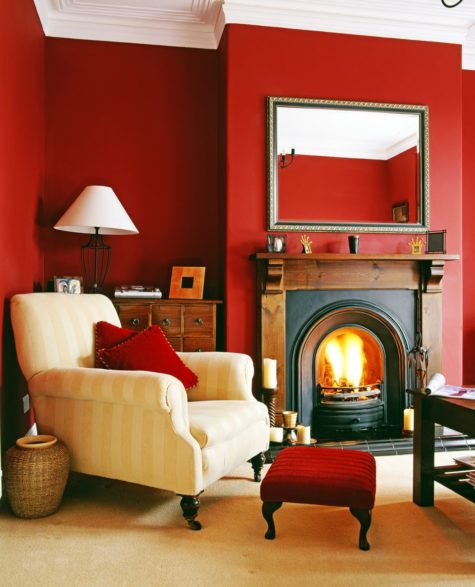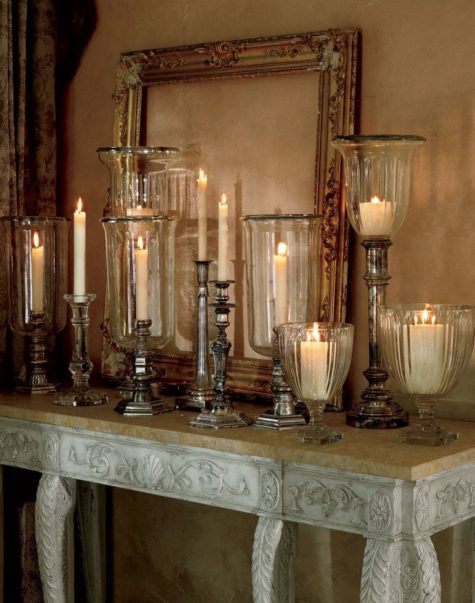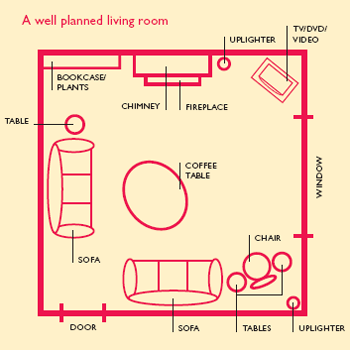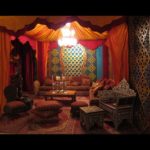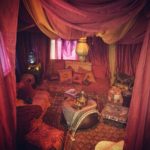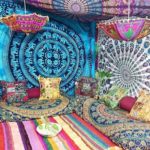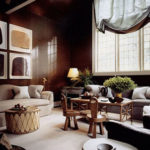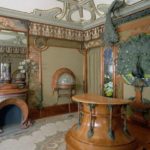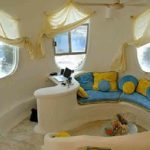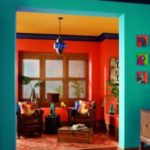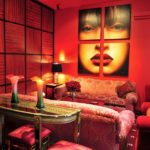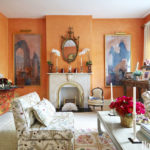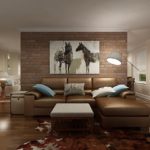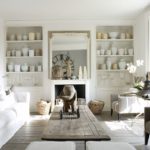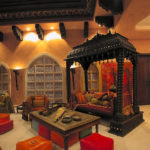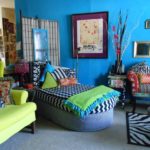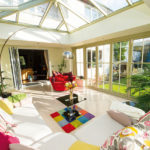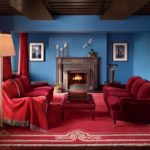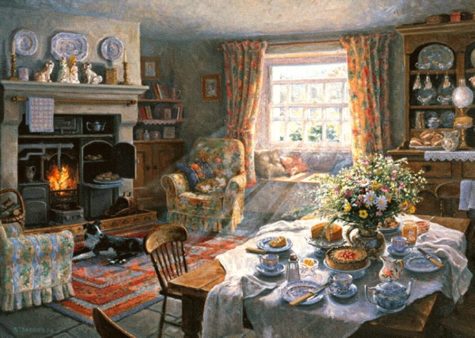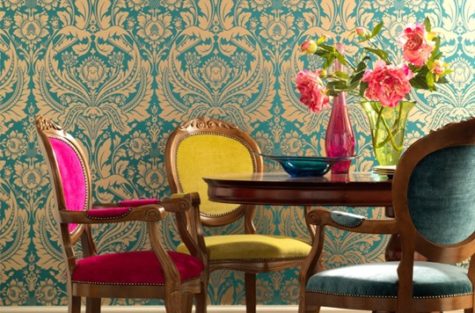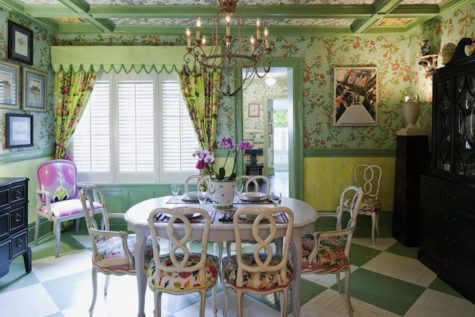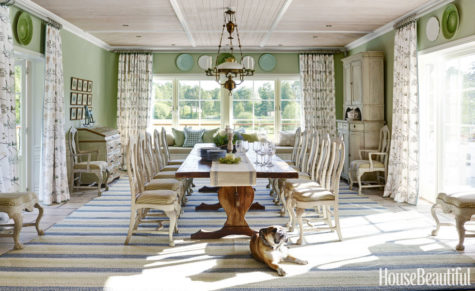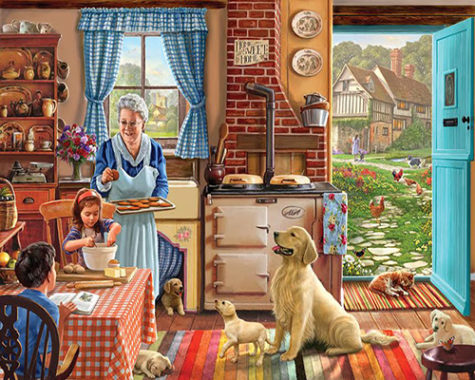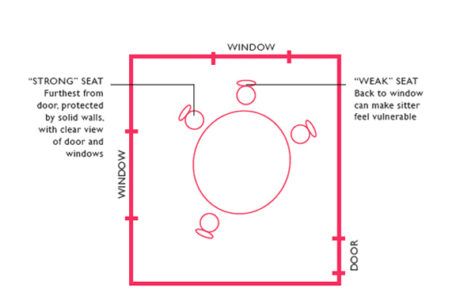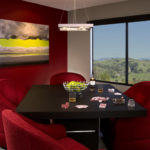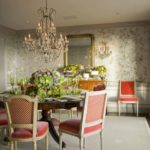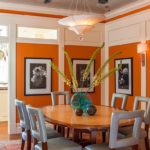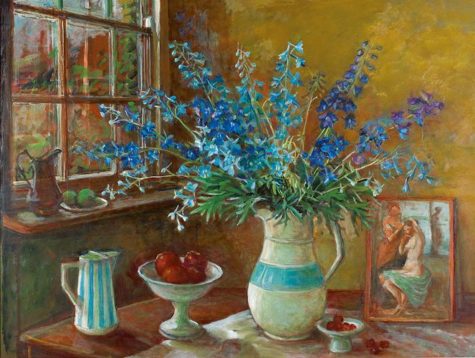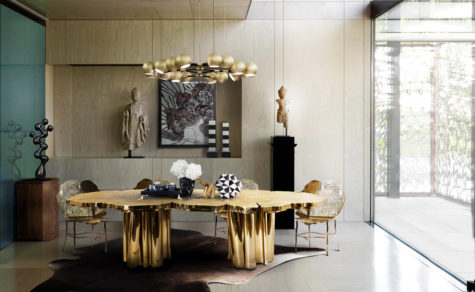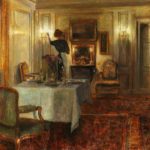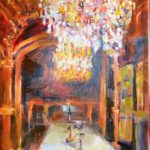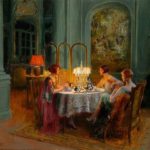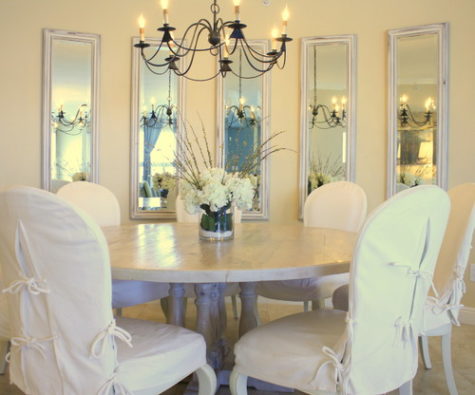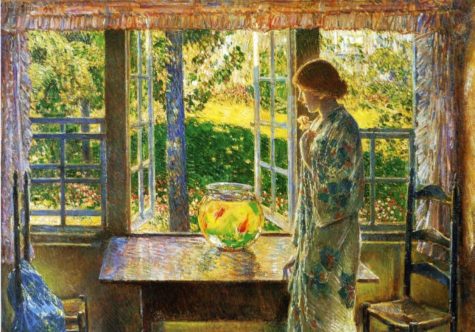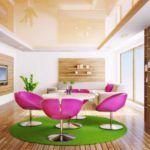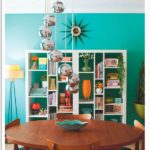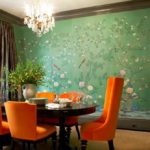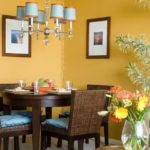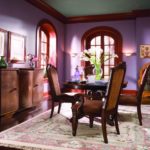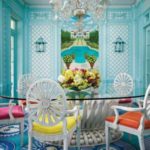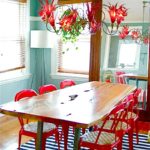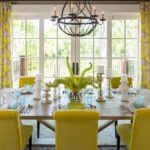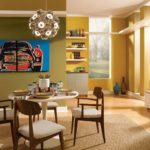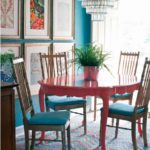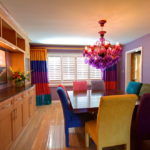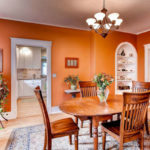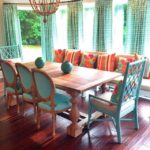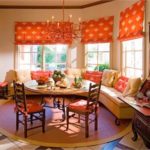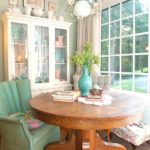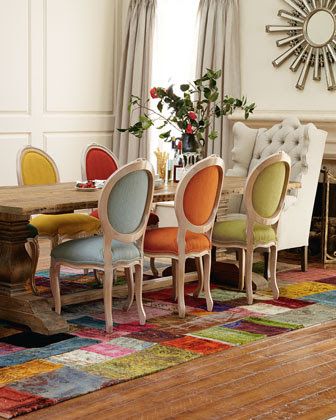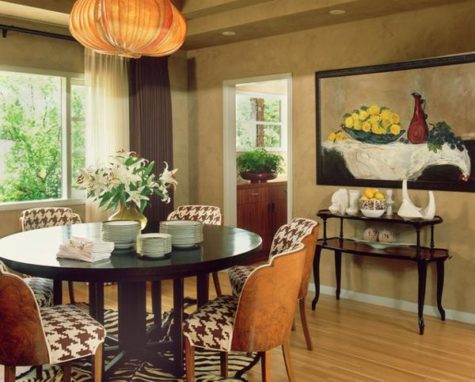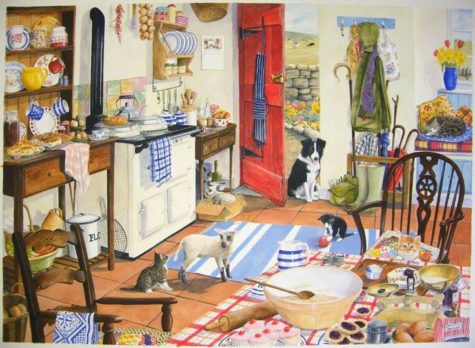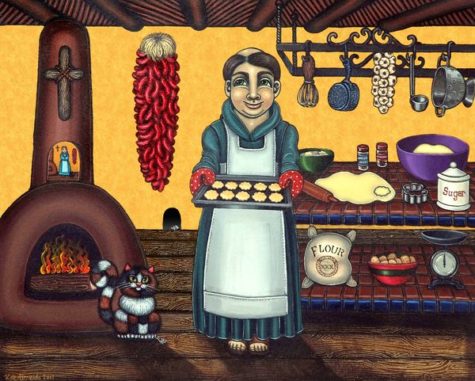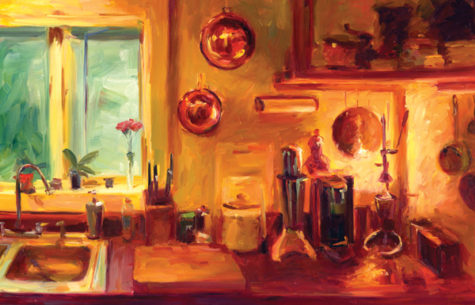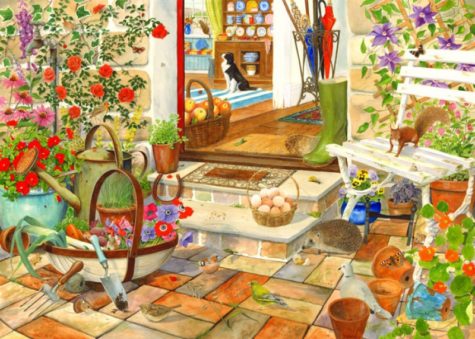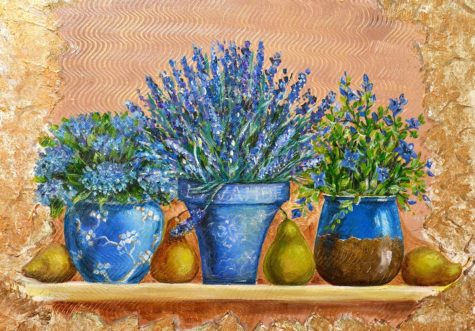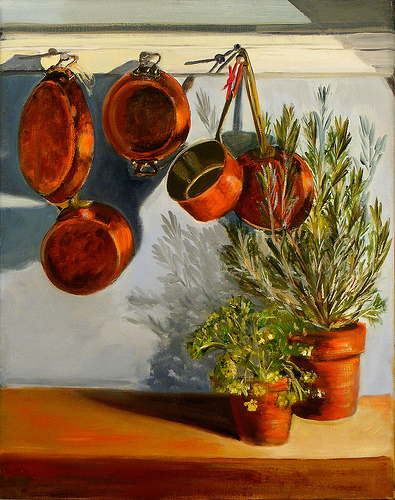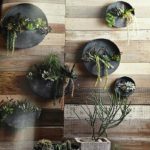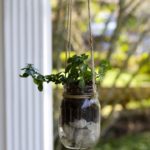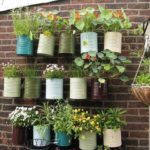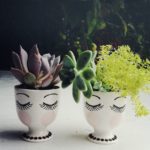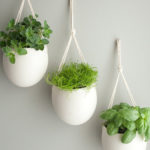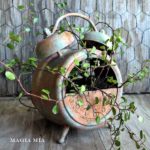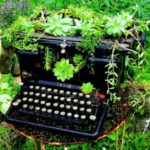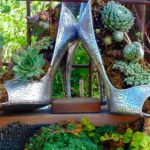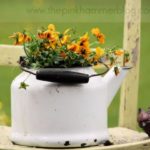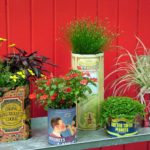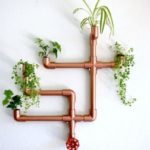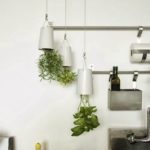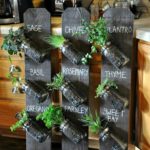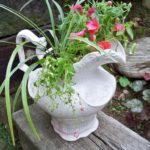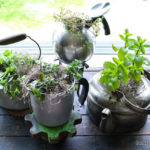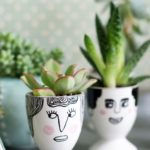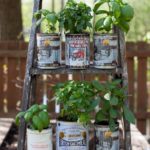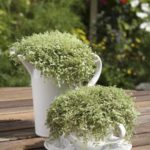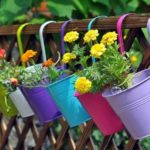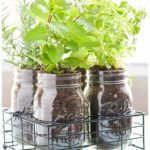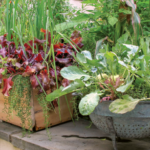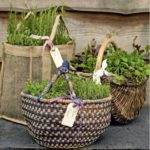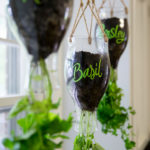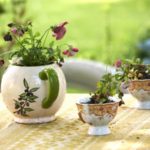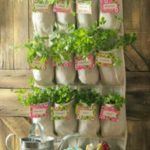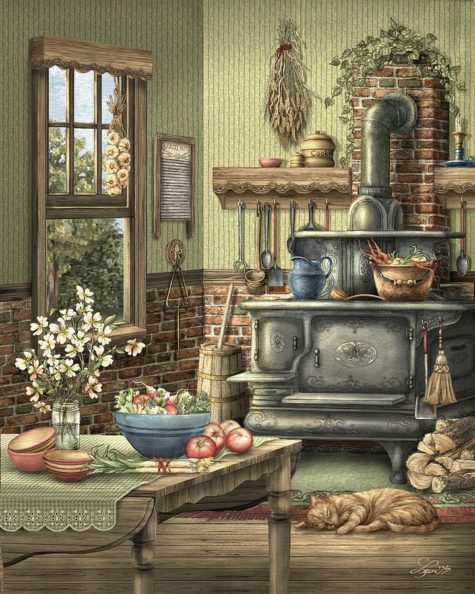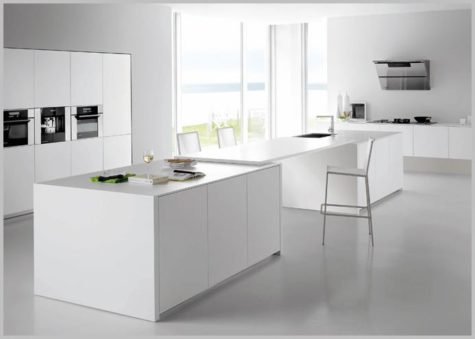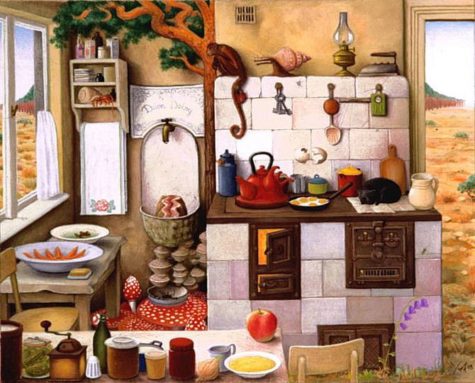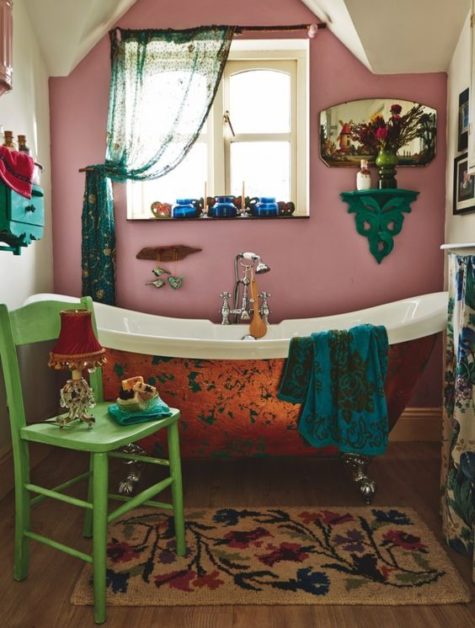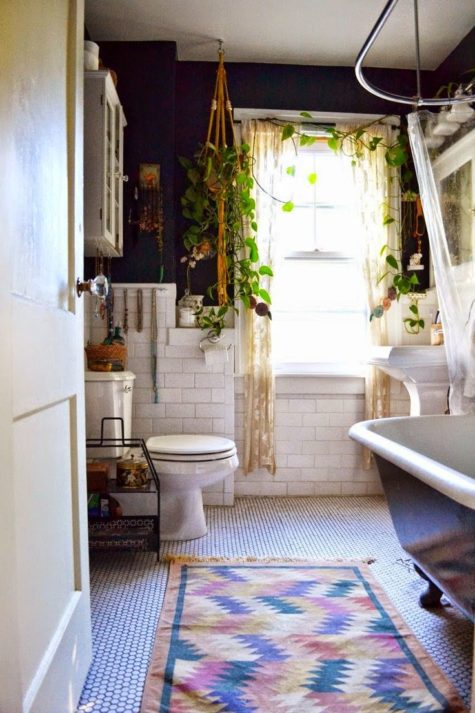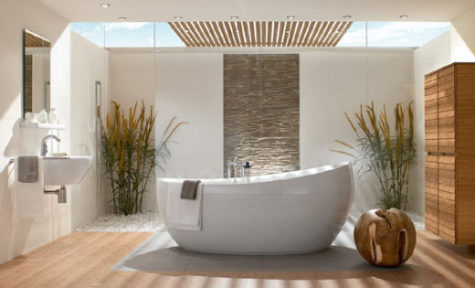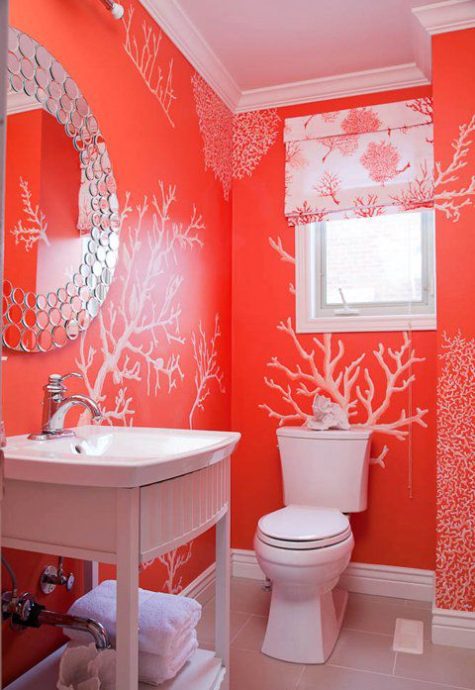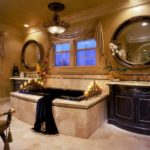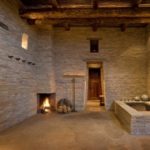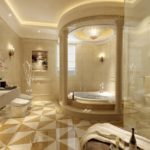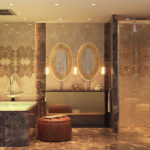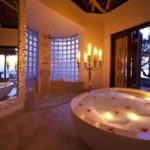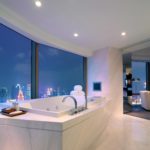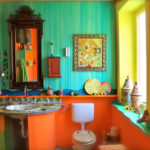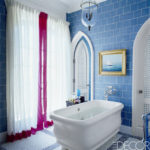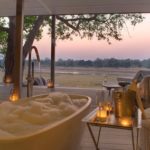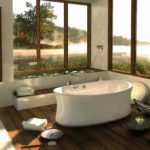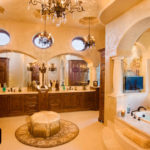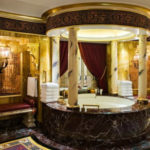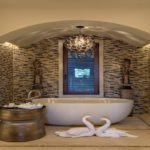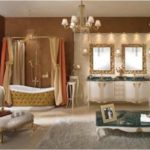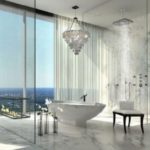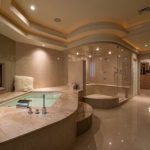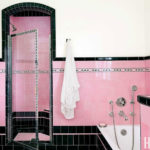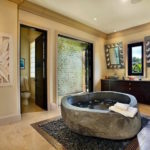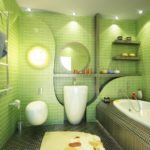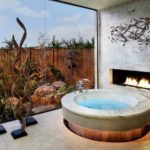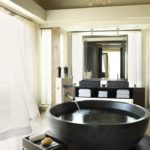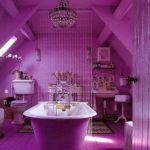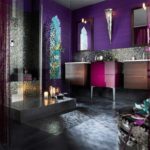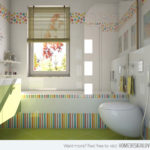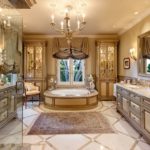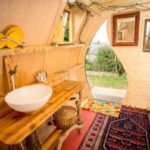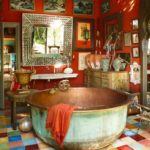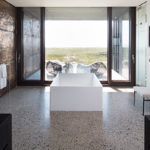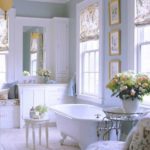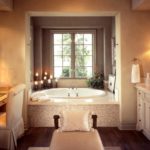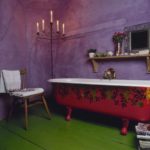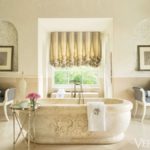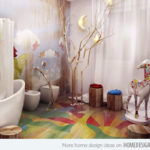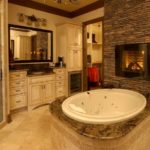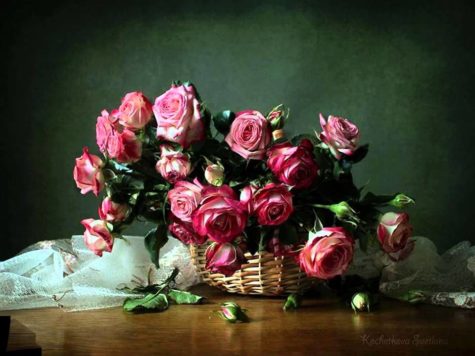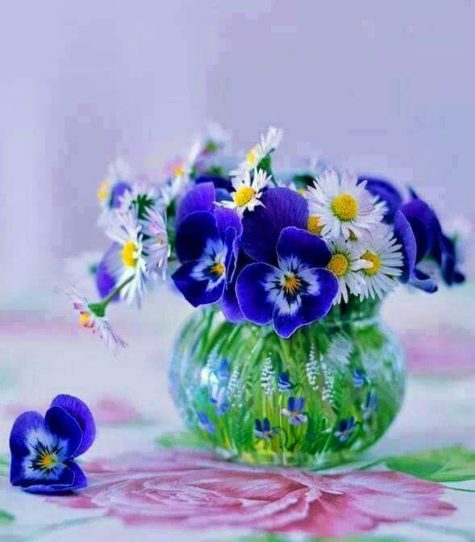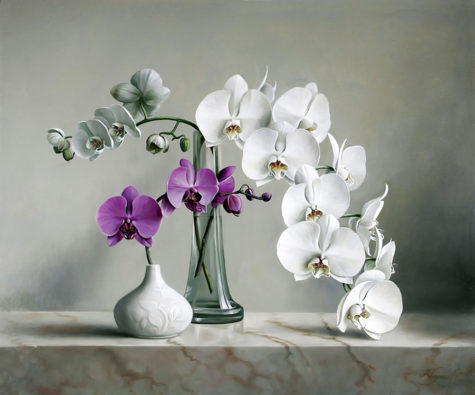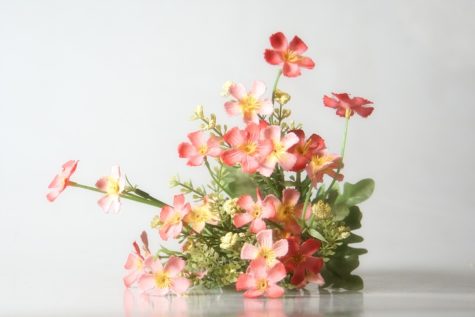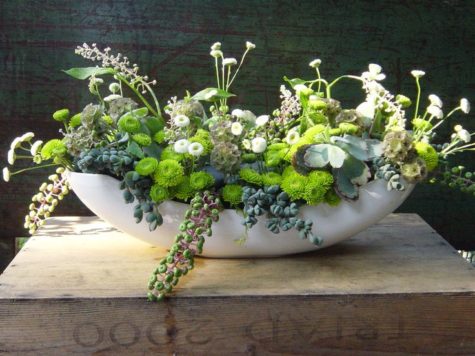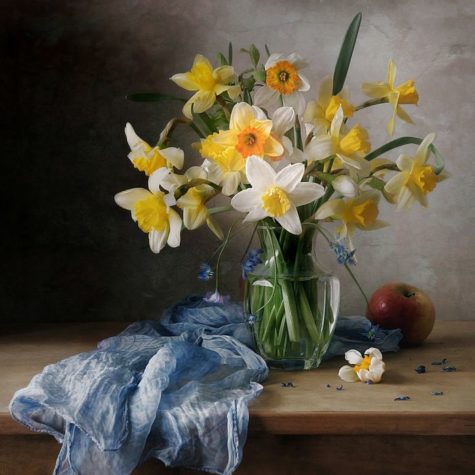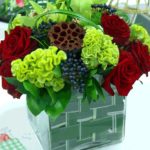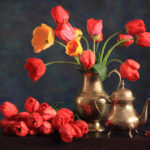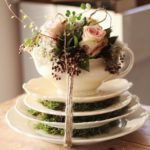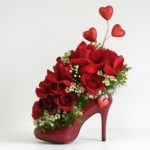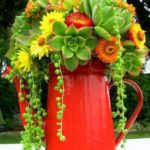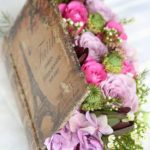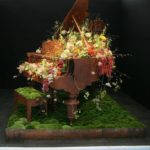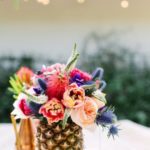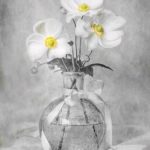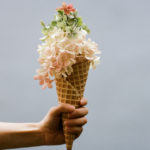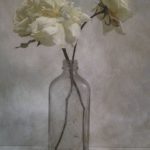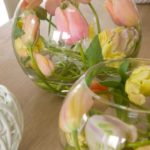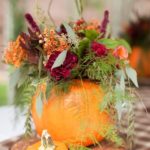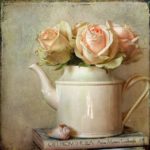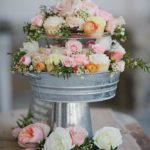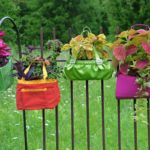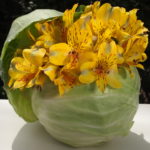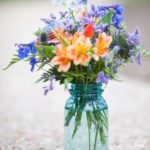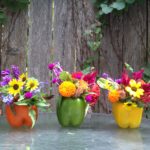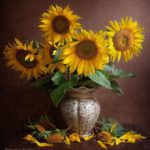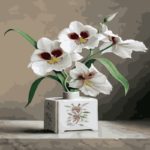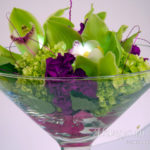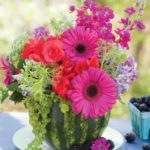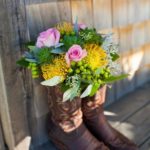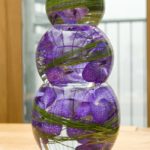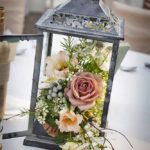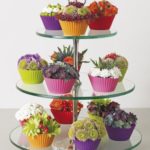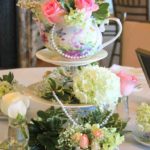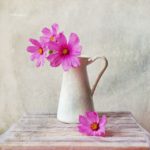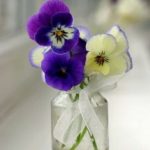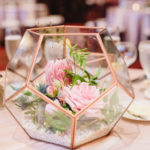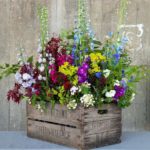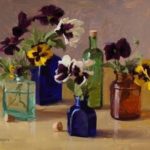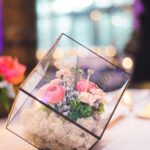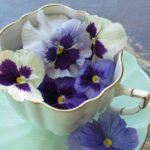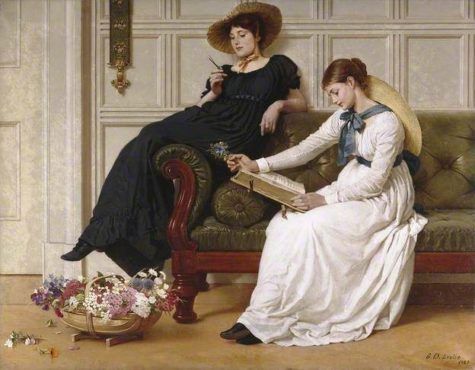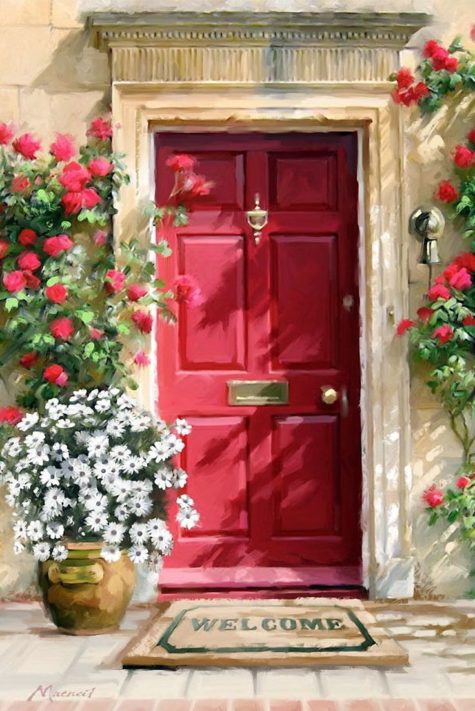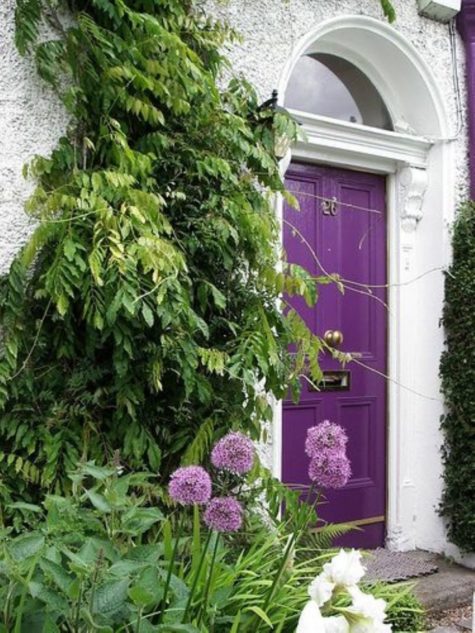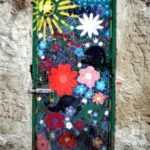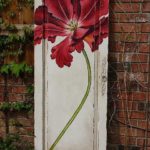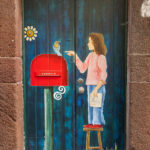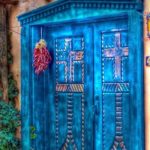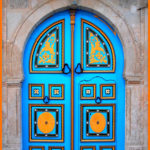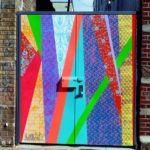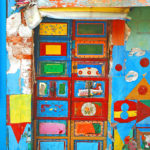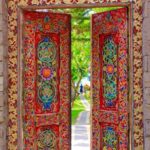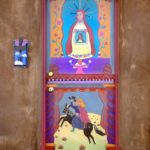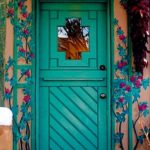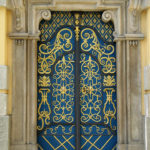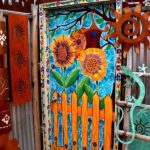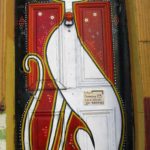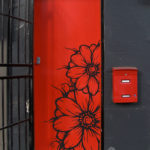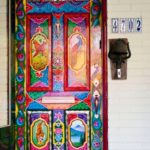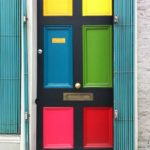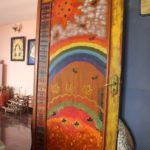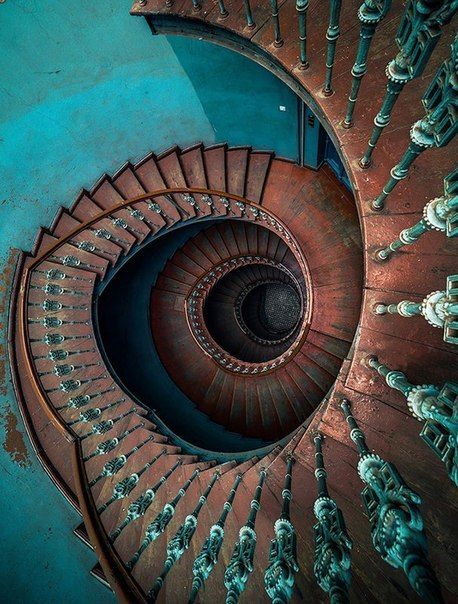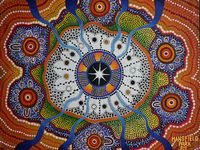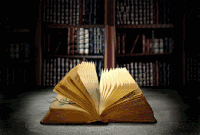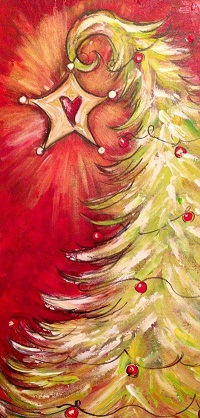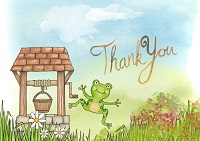Chi
Sixty Second Stress Buster
This is a good technique to get you FLOWING – thinking better, breathing better, more energy and a whole lot less stress.
Ready?
- Put your attention on your body, on your physical feelings for a moment.
- Do you feel any tension, any discomfort anywhere?
- Slowly track through your body and breathe deeply as you do this.
Now, let your attention become like a soothing warm shower that gently massages and unlocks, loosens, makes these tensions simply dissolve and flow away.
Let them flow out and away, with gravity, down your legs, out of your fingertips, rushing down your spine and falling over your shoulders.
Now, and for the last ten seconds, change the water to be cooler, sparkling, revitalising, refreshing, charging through you and making you tingle all over. Ready for work!
From:
- Dr Silvia Hartmann
- The 60 Second Wealth Creators
- Provided by www.DragonRising.com
Get Moving In The Morning
“Movement is life.” First, on a sheer biological level, without movement, there truly is no life. If your lungs do not move, you can not breathe. If your heart does not move, it can not pump blood through your body. When the blood cells don’t move in your body, they can not carry the much needed oxygen. And the list goes on and on. Movement is what equips our amazing and highly complex bodies to operate. So, movement is life.
So, with that said, any person has the ability to do ten to fifteen minutes of light, moderate movement to start their day. And, this is not “going to the gym for 2 hours” type of exercise. This morning exercise routine is more of a “your body has been asleep for hopefully 7 hours and needs to be primed and stretched before being able to fully function for you through the day” type of exercise.
This is an exercise that requires no equipment. It can be done anywhere, inside or outside. It has a track record of thousands of years and shares much in common with yoga but many find it less difficult and you don’t have to get on the floor!
Qi Gong is an ancient Chinese health care system that integrates physical postures, breathing techniques and focused intention to open blockages in the body based on the same meridian system used in acupuncture. The movements are fairly easy to learn and allow access to everyone. To begin to benefit from Qi Gong you do not have to be fit, you don’t have to be flexible; you don’t even have to be able to stand up. The exercises can be modified for almost anyone with patience that wants to learn.
What is Qi Gong?
Qi Gong (qigong, chi kung, chi gung) is an ancient Chinese health care system that integrates physical postures, breathing techniques and focused intention. The word Qi Gong is made up of two Chinese words: Qi (chi) is pronounced chee and is usually translated to mean the life force or vital-energy that flows through all things in the universe. And, the second word, Gong, pronounced gung, means accomplishment, or skill that is cultivated through steady practice. So, put together, Qi Gong (Chi Kung) literally means “Life Energy Cultivation.”
It is a holistic system of coordinated body posture and movement, breathing, and meditation used for health, spirituality, and martial arts training. With roots in Chinese medicine, philosophy, and martial arts, Qi Gong is traditionally viewed as a practice to cultivate and balance qi (life energy). Therefore, it is a system practiced for health maintenance, healing and increasing vitality.
According to Taoist, Buddhist, and Confucian philosophy, Qi Gong allows access to higher realms of awareness, awakens one’s “true nature”, and helps develop human potential. This powerful system of exercise, has been practiced for centuries by millions of Chinese people, and is now practiced worldwide for recreation, exercise and relaxation, preventive medicine and self-healing, alternative medicine, meditation and self-cultivation, and training for martial arts.
Qi Gong practice typically involves moving meditation, coordinating slow flowing movement, deep rhythmic breathing, and calm meditative state of mind. It is based on repetitions of very precise sets of movements, specifically designed to benefit health on many different levels. Some common Qi Gong movements include raising and lowering the arms, moving the head from side to side, and gently rubbing the ears, feet, and hands.
The Benefits of Qi Gong
Sometimes Qi Gong is called a moving meditation in which the mind and body are led to a state of balance and equilibrium also known as homeostasis. A Harvard medical publication said it should also be called “moving medication.” The advantages of improving strength, flexibility and balance are pretty obvious but the advantages of peace that comes from the moving flowing meditative aspect of Qi Gong is equally important.
When the body is in a state of balance all the systems work better.
Much of the tendency to this internal balance is happening all of the time totally out of our awareness. With very little conscious input from us, our bodies are working to keep us in a state of homeostasis, that is, everything just so. The fight-flight reaction vs. the relaxation response is an example of the body tending toward homeostasis.
But in our stressed out world many of us are living in a continuous state of stress without even being aware of it. Without practice the relaxation response doesn’t always occur. Qi Gong can help us return to homeostasis and the relaxation response.
In addition to our tendency to stress there is a second profound tendency to move less as we develop physical limitations. Often the two occur together but either alone can lead to a downward spiral.
The health benefits from Qi Gong comes about both by supporting the body’s natural tendency to return to balance and equilibrium and also gently yet profoundly creating strength, flexibility and balance in the muscles and joints through gentle flowing movements. This is the winning combination: body and mind. The physical and mental practice continuously supports the return to balance.
The Eight-brocade Exercise (Ba Duan Jin)
The Eight-brocade Exercise (Ba Duan Jin) is a simple sequence of movements, appropriate for almost anyone. Unlike more advanced Qi Gong practices, it can be learned from a book. The complete set of movements only takes five to ten minutes to do and helps to release blockages along all twelve meridians.

This 800-year old exercise, which the ancients likened to beautiful brocade, consists of eight sections, is very popular among the Chinese people. There are different postures such as sitting or standing; each section can be practiced on its own and each targets a specific organ or health need. The whole set of movements are fine and delicate with moderate intensity. The movements can vary greatly according to different schools of practice; the following is the most important and widely practiced protocol.
Prepare yourself by standing naturally with feet shoulder-width apart, and the hands hanging by both sides. Be calm, focused and let the body relax and the breathing natural.
- Two Hands Hold up the Heavens
Raise both hands above the head with the palms facing upward, as if holding up the heavens. The eyes should follow the hands over the head. Stretch up on the toes and hold the posture for a few seconds before gently returning to the starting position. Inhale through the nose while bringing the arms up, and exhale through the mouth when bringing the arms down. Repeat the procedure six times.
This section is said to benefit the triple burner, which is the passage for water, nutrients and fluid throughout the body. This exercise activates the fluid flowing in it and ensures proper nourishment throughout the body.
- Draw a bow like shooting a hawk
Separate the legs and bend the knees, with half-clenched fists in front of the chest. Draw the hands up and pull as if drawing a bow to the right; extend the limbs fully; then repeat on the left side. The eyes should follow the trajectory of the imaginary arrow at all times. Inhale through the nose while drawing the arms up, and exhale through the mouth when bringing the arms down. Repeat the whole procedure six times.
This section is said to benefit the lungs by expanding the chest and exercising the muscles of the upper body.
- Separate Heaven and Earth
Standing naturally with arms bent at the elbows, let the palms face upwards and the fingertips touch each other. Raise the hands and turn the palms downwards; then draw the right hand up with the palm facing upward; the left hand moves downward with the palm facing down. When the arms are extended, straighten the legs. Exhale through the nose when both hands are in front of the chest, and inhale through the mouth when the arms are apart. Repeat the whole procedure six times.
This section is said to regulate the spleen and stomach by the lifting and lowering actions. It contributes to the ascending of spleen-qi and the descending of stomach-qi, thus promoting the digestive functions.
- Wise Owl Gazes Backwards
Inhaling while slowly turning the head to the right side as far as possible, look back as much as possible, then exhale and return to the original position. Repeat on the left side as one complete procedure and repeat six times.
This section is said to benefit those with consumptive disease and injuries by enriching the essence and blood, calming the mind and promoting organ functioning.
- Sway the Head and Shake the Tail
Prepare by squatting down halfway with feet apart and the palms on the thighs. Look down and lean the upper trunk forward, exhaling while swinging the head to the left and swinging the buttocks to the right; inhale while returning. Switch directions and repeat the cycle six times.
It is said that swaying the head can send down heart-fire while swinging the buttocks causes the kidney-yin to ascend to meet the heart-fire; it lets both organs mutually complement each other.
- Two Hands Hold the Feet
Bend over slowly and touch your toes keeping the legs straight; keep the head up slightly. Then place the hands on the lower back and bend backward and stretch as far as you can. Inhale through the nose at the start of the bend and exhale through the mouth at the end. Repeat the whole procedure six times.
This section can reinforce the kidneys and strengthen the waist and the knees. The kidneys are the source of all energy in the body and are located near the waist; constant practice benefits the function of all the other organ systems as well.
- Punch With Anger
Take a horse-riding posture; the hands are tightly clenched with palms facing upwards at waist level. Punch with the palm side downward and draw back with alternative arms; imagine pent-up anger being released through the punch. Inhale through the nose and exhale through the mouth.
This section is said to strengthen the muscles of the whole body.
- Bouncing on the Toes
Interlock the hands and put them behind the neck and extend the neck backward while the hands draw forward; stretch up on the toes and hold the posture for a few seconds before gently returning to the starting position. Exhale while lifting on both heels; inhale while returning.
This is a push upward from the toes with a small rocking motion on landing. The gentle shaking vibrations of this piece is said to “smooth out” the qi after practice of the preceding seven pieces. Repeat six times.
This section is said to enhance the protective qi and promote resistance. The Bladder Meridian, which governs the surface of the whole body, passes through the neck. The movements promote the smooth flow of protective qi and secure the striae on the body surface.
Sources:
Living Room Feng Shui
Living rooms have always been an integral and important part of any home – be it an apartment or an independent house – and that’s because living room is the only place in your home where most of the social and family gatherings happen.
As a place of entertaining guests and a space of family chatting, gathering and relaxation, the living room is supposed to be lively and harmonious. The living room Feng Shui is related to personal wealth and health, as well as the peace and happiness of the whole family.
The living room is an essential part of a house and it is also one of the most vulnerable parts of a home. Vulnerable because, in majority of houses, living room is the first room that someone goes to once they enter from the main door and Qi energy isn’t an exception.
Now, imagine a house, in which the Qi entering the home – obviously via living room – is very fast and agitated (fast moving Qi in feng shui is called as Sha-Qi and it’s very inauspicious) or extremely slow and almost still (which is, again, very inauspicious); this Qi will – definitely – interact with family members and bring all sorts of unwanted, unexpected and tormenting situations in life; below is a list of a few – in fact very few – such situations.
- Loss of wealth, money and even leading to bankruptcy.
- Degradation in health and lethal medical conditions.
- Defamation of social reputation.
Now, a feng shui living room is the one that has the ability to transform any type of Qi (extremely fast or dead slow) in to positive Qi (a steady and calmly moving one). The positive Qi is believed to attract wealth, health, good luck and lots of name and fame, which is – after all – what we all want to have. This is – without a doubt – the number one reason to make the living room in your home a feng shui complaint one.
To make it really easy for you to understand and achieve a feng shui living room, we’ve divided the process into steps.
Basic do’s for good feng shui in the living room:
- The living room must be roomy, comfy and pleasing.
- It must receive ample sun light and must be ventilated.
- Place the sofa against a solid wall; it doesn’t need to touch the wall, you can keep 1-2 inches distance.
- While sitting on the main sofa, you must be able to see the main door. If entrance isn’t visible then use a mirror to see the door.
- Place a bowl with crystals, coins, and various wealth symbols on coffee table.
- If there’s a beautiful landscape outside your home, then hang a mirror in such a way that it reflects that landscape. This brings in the positive Qi energy.
- Hang images, posters or pictures that are lively and positive such as a pleasant landscape or smiling faces etc.
- Make sure to cover the TV screen when it’s off else it becomes a sort of mirror.
- Place 2 Foo Dogs on either side outside the main door, as if guarding your home.
For north side of living room
- An aquarium in north brings wealth and auspicious opportunities.
- Keep eight red and one black fish in aquarium.
- Square or rectangular shaped aquariums are best; round ones will also do.
- A water fountain in north also attracts wealth and luck.
- The fountain must flow towards the room and not outwards.
- Hang picture of beautiful water body such as meandering river or a boat/ship sailing (make sure the boat/ship sails into the room).
- Try to use black and blue colors in north.
- TV in north attracts good luck in career.
- Avoid keeping any plants in north side of the living room.
- Avoid placing a fireplace in north side of the living room.
For south side of living room
- Place candles, wood furniture and other wooden décor items.
- You can locate a fire place in south.
- Try to use more of red, pink, orange, and green colors.
- Place TV or plants to get fame and respect.
- Avoid aquarium or anything related to water in south side of the living room.
- Avoid placing mirrors on the south walls.
For east and southeast side of living room
- Put wood items like picture frames, lamps, book shelves etc.
- Hang coins tied with red ribbon in east corner (brings wealth and money).
- Hang dragon painting (looking in to the house) on east wall to bring wealth.
- Place dragon headed tortoise with coin in its mouth in southeast corner (this brings wealth).
- Place a three legged money toad in southeast; it brings money and wealth.
- Use more of green and brown colors in east or southeast.
- Plants in southeast bring wealth and money.
- Plants in East direction attract health.
- Keeping an aquarium in southeast attracts wealth and luck.
- Avoid having a fireplace in the southeast side of your living room.
For west and northwest side of living room
- Keep metal décor objects such as bowls and trays.
- Put metal figurines, furniture, candle holders, photo frames etc.
- Use blue, gray, gold, tan, and bronze colors.
- A family picture in metal frame on west wall brings luck.
- Avoid aquarium or anything related to water in the west or northwest side of the living room.
- Avoid placing mirrors on the west walls.
- Avoid having a fireplace in the west and northwest side of your living room.
For northeast and southwest side of living room
- You can place crystals and other minerals objects.
- Keep pottery and ceramics, such as show pieces, pots, bowls etc.
- Mustard, clay, brown, tan and russet toned colors are best.
- Cut glass and hand-blown glass objects can be kept.
- A fire place in southwest enhances romance and love.
- A fire place in northeast helps in peaceful thinking; also brings luck in education.
- Avoid keeping any plants in the southwest or north east side of the living room.
What you must avoid in the living room
- Avoid windows behind the main sofa.
- Never place the sofa under a beam; this brings head related medical troubles.
- Avoid L shaped sofas.
- Any mirror shouldn’t reflect clutter, dirt or anything negative as that negativity will be attracted to your home.
- Make sure that your image isn’t seen in the mirror while you’re standing at any door.
- Avoid hanging pictures that depict negative emotions such as a weeping girl, vicious animals, war, crime, loneliness etc.
- Avoid clutter and mess in living room (actually this should be avoided everywhere).
- Avoid having a door directly facing the door of living room.
- Avoid turbulent or rough sea paintings as they depict struggle.
Decorating the Feng Shui Way
In feng shui terms, the main challenge with decorating a living room is to create a space that has the ability to not only be beautiful and practical but also have a strong, fresh, clean, and happy energy. A living room that is beautiful and works well on a practical level usually takes quite a bit of planning and persistence (along with the desire to decorate, of course!)
- Clutter
A living room that is clean and clutter free is the only foundation for good feng shui. Yes, we know you might have heard that many times, but this essential first step has to be emphasized again. There can be no solid and good feng shui energy in a space that is infected by clutter, the two of them cannot co-exist; it is either one or the other.
- Air and Light
The next step in good feng shui living room decorating is to be sure your room gets as much natural light and good quality air as it possibly can. Good quality air and good quality light create the foundation of good feng shui energy, and there are many ways to help you do the best with this feng shui step. For example, if you have only a few small windows, decorate with mirrors to bring more natural light, as well as be sure to layer your indoor lighting.
A bright and sunny living room will bring prosperous family luck to the family. Dark colors should be avoided in the decoration of the living room, as it may bring bad luck to the family.
- What does layering your lighting mean?
Simply stated, it means you have several different levels of lighting. So, in addition to a ceiling fixture, you will also have a floor lamp and several table lamps, for example. If you limit your living room lighting to just your ceiling lamp or just a floor lamp, this will tend to create a sad and potentially depressing quality of feng shui energy in your room.
- How about fresh air?
The benefits of fresh air to your health are obvious, so along with opening your windows often we highly suggest you go for a good quality aromatherapy diffuser to benefit from the healing power of pure essential oils. Stale air and poor lighting are big enemies of good feng shui, so be sure you pay attention to the quality of air and light if you want to have good feng shui in your living room.
- Be Practical
Having a welcomed, relaxed (and beautiful!) space for both children and adults to spend time in can be a challenge. Well, we should include pets, too. It is important to know that you can create a very beautiful living room, but if it does not work on a practical level and you keep worrying about your kids messing it up or do not want your pets to be there, then no matter how beautiful your room is, this is not good feng shui.
Basically, a good feng shui space is a space that does the best job for its specific purpose, and beauty at the expense of practical use is just not good feng shui.
Contrary to the popular belief, children can help you with keeping the living room clean, it is just a matter of clear organization and clear communication, of course. If each item in your living room has its own space, the possibility of mess and clutter is greatly diminished, and everyone can feel happy and enjoy good feng shui energy.
Color Matters
Ok, now that we are done with the basics – no clutter, good organization, good quality air and light plus practical beauty, let’s move on to the more specific feng shui decorating tips for your living room.
We start with the color scheme, of course, because color is an expression of light and it has the biggest impact on our mood. It is also very important for good feng shui because each color is an expression of a specific feng shui element.
- Feng shui elements
In feng shui, each color is considered to be an expression of one of the 5 feng shui elements: Fire, Earth, Metal, Water, and Wood. Each of these 5 elements “governs” a specific area of your home (according to the feng shui energy map of your space called bagua). When your choice of color is focused on strengthening and nourishing the feng shui element of the area you are decorating, this results in good feng shui energy.
This feng shui color guide will help you choose best colors to create a harmonious feng shui home. Choose the feng shui colors according to the energy you need and bring them into your space with the wall color, art, photography, or various decor items.
Choosing a good feng shui decor scheme for your living room usually requires a bit of work. It is best to start with understanding the feng shui bagua, or energy map of your home. This is our next step.
- Define and use the bagua
The bagua is the feng shui energy map of your space. In order to create best feng shui energy in your living room, it is best to define the bagua of your home first. Once you know the feng shui area of your living room, you will have clarity on the best choice of colors, shapes, and materials based on the feng shui element that needs to be supported there.
For example, if your living room is in the South feng shui bagua area, then it is excellent to decorate your living room with colors of the Fire and Wood feng shui elements. So colors red, orange, yellow, purple, along with green and deep brown will all create excellent feng shui energy in your South facing living room.
By the same token, a black or blue color scheme is not recommended for a South facing living room because it will create a weak feng shui energy due to the clashing effect of feng shui elements (blue and black colors are the expression of the Water feng shui element that puts down the Fire needed in the South area).
If this all sounds too complicated for now and you just want a shortcut to the best feng shui colors for your living room, here they are:
- East room colors:
If you are looking for best colors for an East facing room, be it a living room or a child’s room, then the colors of the Wood element – green and brown – are your best friend.
Blue and black colors are also good feng shui for an East room. Limit red and purple colors.
- Southeast room colors
Southeast area rooms love the same colors as the East area – green, brown, blue and black, with one addition – golden tones, as traditionally Southeast is considered to be the Money area in one’s home, so bring some gold colored treasures into a Southeast living room or dining.
- South room colors
South rooms have a lot of fire and they love it! Feng shui-wise, best colors to create good energy in your South facing rooms are the Fire and Wood element colors – red, orange, purple, pink, strong yellow, as well as green and brown. Try to limit a strong presence of blue and black colors in your South facing rooms.
- Southwest room colors
Best feng shui in Southwest facing rooms is created by the warm and nourishing earthy colors – meaning colors of clay, pottery, earthenware, bricks, etc. Fire colors are also excellent for a Southwest room, so you can also go for warm red, pink or coral.
Considering that this area in feng shui in connected to your love and marriage energy, add a touch of romance with a floral print or some sensual fabric in blush skin color tones.
- West room colors
A West facing room needs (and loves) a strong presence of the Metal feng shui element, which is expressed in colors gray and white, as well as all metallic finishes. It also loves the warmth of nourishing earthy colors.
Avoid a strong presence of fiery colors, deep blues and blacks.
- Northwest room colors
Northwest area rooms also love the Metal feng shui element, so the same colors are good here: grays, whites, all metallic finishes and warm earthy colors from nature. Avoid fiery colors, avoid black and blue colors. As this is the area connected to Heavenly Blessings in feng shui, a small metal Buddha statue can work very well here.
- North room colors
North loves water, water and more water! So, all shades of blue and black colors are excellent here. White, gray and all metallic finishes are also helping create good feng shui in a North facing room. Avoid a strong presence of earthy colors.
- Northeast room colors
A Northeast facing room loves the Fire and Earth feng shui elements and is connected to the energy of spiritual growth and cultivation.
This golden Buddha wall mural expresses perfectly the best feng shui energy for the Northeast location. Color-wise, all earthy colors plus red, oranges, purple, magenta, as well as golden finishes are excellent here.
- Fire Element Colors
A balanced fire feng shui element in your home or office will bring supporting energy to all your career efforts and will help achieve recognition. Fire element also nourishes one’s sexual energy and inner warmth.
Fire is the dominant feng shui element of South bagua area of your home or office. Northeast and Southwest feng shui areas also benefit from good fire element energy in your decorating.
Fire feng shui element colors are: Red, Orange, Purple, Pink, Strong Yellow
- Earth Element Colors
A strong and harmonious feng shui earth element in your home or office will help create stability, nourishment and calm protection for all your relationships. The earth element is also needed to maintain one’s health and inner balance.
Earth is the main feng shui element of Northeast and Southwest bagua areas. The center of your home and office is also governed by the earth feng shui element.
Feng shui earth element colors are: Light Yellow, Beige/Skin Color, Earthy/Sandy Colors
- Metal Element Colors
Feng shui metal element brings the qualities of sharpness, precision and efficiency; its balanced presence will help you live with clarity and lightness. A good presence of metal element in your home or office will help sustain the energy of calm, crisp clarity and eliminate distractions.
Metal is the dominant feng shui element of West and Northwest bagua areas. North bagua area of your home or office also benefits from the presence of metal element.
Feng shui metal element colors are: Gray, White
- Water Element Colors
A harmonious feng shui water element will bring a refreshing energy of calm, ease, purity and freshness. Water element is also the ancient symbol of abundance, thus a potent feng shui cure for wealth. This related to the use of fountains and mirrors as wealth feng shui cures.
Water is the feng shui element of North bagua area of your home or office. East and Southeast bagua areas also benefit from a strong water element.
Feng shui water element colors are: Blue, Black
- Wood element Colors
Lush and healing, the feng shui wood element brings the energy of vibrant health, vitality, and growth. Wood element is also an expression of abundance, thus it is used as a feng shui cure for wealth and prosperity. This is related to the use of plants and the money tree in feng shui.
Wood is the feng shui element of the East and Southeast bagua areas of your home. South bagua area also benefits from a strong presence of wood element.
Feng shui wood element colors are: Brown, Green
- Some thoughts about color
Color is like music, nourishing and uplifting, and the more colors you harmoniously absorb throughout the day, the higher your sense of well-being. Do not be afraid to bring vibrant colors into your space as color is light, and light is our number one nutrient.
Shapes and Materials
Just as there are specific colors that will help you create good feng shui energy in your living room, there are also specific decorating shapes that can strengthen the desired prosperous and happy feng shui energy in your living room.
Each shape is an expression of a specific feng shui element, so choose the best shape based on the bagua area of your living room. For example, if you have a North facing living room, then wavy shapes resembling the flow of water can create wonderful energy.
The same principle applies to various decorating materials. To continue with the example of a North facing living room, best feng shui decor materials for it would be predominantly metal, glass or mirror-like surfaces. The materials to avoid (in excess) in a North facing living room are Wood furniture or decor items, as well as a lot of earthenware. Because plants belong to the Wood feng shui element, too many plants will weaken the feng shui energy of a North facing living room, so choose wisely.
- East Room Shapes and Materials
Shapes: The decorating shapes you can freely use in an East facing room are square, rectangular, wavy shapes and organic nature shapes such as pebble shape, for example. These shapes stand for specific elements that are good for the main feng shui element of the East area (Wood). Avoid a strong presence of round or triangular shapes.
Materials: Wood furniture and decor elements are the absolute best choice for the East area. Mirrored surfaces, tiles and brick surfaces, as well as all natural fiber rugs can also help create good feng shui energy. Avoid a strong presence of decorating items made from metal.
- Southeast Room Shapes and Materials
Shapes: Rectangular, square and wavy/flowing shapes are all good for a Southeast area room. As in the case with the East area, avoid too many round or triangular/fiery shapes.
Materials: The materials you can freely use in a southeast facing room are wood, natural crystals, earthenware, mirror-like surfaces, natural materials and rugs such as jute, sisal, etc.
- South Room Shapes and Materials
Shapes: The decorating shapes you can freely use in a south facing room are triangles, stars, pyramids, diamonds (all shapes associated with the fire feng shui element) and rectangular shapes. Avoid wavy/water like shapes and too many mirror like surfaces. Also best to limit a strong presence of square shapes (as in a big square coffee table, for example).
Materials: Wood furniture, all natural fibers such as jute, sisal, linen, etc; fireplace and candles are all good for a south area room.
- Southwest Room Shapes and Materials
Shapes: Sensual, receptive/yin energy shapes (as pictured above), as well squares, triangles, diamonds, pyramids, stars (fire feng shui element shapes) are the absolute best choice for the southwest area.
Materials: The materials you can freely use in a southwest facing room are: all earthenware, rock crystals, as well as candles and/or a fireplace. Avoid too many mirror like surfaces or a strong presence of wood furniture pieces and decor items.
- West Room Shapes and Materials
Shapes: Round and square shapes are all good for a west area room. Avoid too many fiery shapes (triangles, pyramids, stars, diamonds).
Materials: The materials you can freely use in a west facing room are metal, glass and all earthenware and rock crystals.
- Northwest Room Shapes and Materials
Shapes: Round, oval and square are the absolute best choice for the northwest area. Avoid a strong presence of triangles, diamonds, stars and pyramids in your decor pieces.
Materials: The materials you can freely use in a west facing room are metal, glass and all earthenware (clay, pottery, ceramics, etc), as well as natural crystals.
- North Room Shapes and Materials
Shapes: Round, oval and wavy/resembling water movement are all good for a north area room. Avoid squares.
Materials: The materials you can freely use in a north facing room are metal, glass and mirror like surfaces. Avoid a strong presence of wood furniture pieces and decor items.
- Northeast Room Shapes and Materials
Shapes: Triangles, pyramids, diamonds, stars and squares are the absolute best choice for the northeast area. Avoid too many round shapes or mirror like surfaces.
Materials: The materials you can freely use in a northeast facing room are all earthenware (clay, pottery, ceramics), rock crystals, candles.
- Important Points
Please be sure not to overthink your decisions; read all about the feng shui guidelines and then follow your own energy as to what is best for your space. Feng shui is a complex art and science that works on many levels, and often your intuition can be your best guide!
Watch for Balance
While it is important to emphasize the colors and shapes that are most needed for good feng shui in your living room; to completely avoid other colors and shapes would be a mistake. An all-pink color living room in your love area or an all-blue color living room in your career area is not really good feng shui.
Feng shui is all about health, balance, and harmony, and we need all 5 feng shui elements in our environment in order to thrive and be happy. So, good feng shui in your living room is based on a subtle dance of all colors and shapes, with two or three taking the main stage based on the feng shui bagua requirements.
For example, you can still have a mirror (Water feng shui element) in the South bagua area (ruled by the Fire feng shui element) if you do not make it into a focal point. For this purpose, choose a mirror with a fiery shape (like a sunburst mirror) and Fire element material (gold finish is a good expression of the fire element).
Arranging the Furniture
Ok, we are done with the complex (but very important!) subject of choosing the best feng shui decor elements according to the bagua area your living room is located in. Now we can finally focus on the best furniture arrangement in your living room – something that many people actually start with.
The best feng shui living room arrangement is an arrangement where all your family members (plus guests) feel at ease and relaxed. This means there is enough breathing room for everyone, and the basic design principles are taken into consideration.
Working with scale and proportion, creating a good relationship between your furniture pieces, creating good conversation areas – these are all well known decorating principles that you are probably familiar with (and can easily find many online resources to help you). Feng shui agrees with the importance of all these principles with just one condition – there has to be a good Chi flow.
- Create A Flow and Go with It
The notion of Chi flow is one of the main principles of feng shui that has to be respected if one wants to benefit from good energy. The Chi – another name for Universal energy – has to flow smoothly in your living room, nourishing it and filling it with energy.
Chi flow can be viewed as water flow, so with this comparison in mind take a look at your living room arrangement and decide if the water (imaginary water as Chi flow) coming in from the living room door would flow smoothly and cheerfully about your living room. Will it get stuck in some areas? Will it easily escape through a big window without having the chance to actually nourish your living room?
Play and experiment with several furniture arrangements until you find the one that allows for the easiest and most graceful flow of Chi/energy.
- How To Check The Flow of Chi
One of the basic ways to check the energy flow in your home is to imagine Chi, or energy, as water. If water were to flow into your home – starting at the main door – where would it stop or stagnate?
Would the water flow harmoniously and smoothly to all areas of your home, gently refreshing it, or would it rush right out the back door in a forceful motion? For example, when you have big objects or specific home design elements in a straight line, the energy will flow more quickly and forcefully, which is generally considered bad feng shui.
One of the first things people remember about feng shui is the benefit of curved lines over straight lines. This is true not only for the outside of one’s home but for the inside, too.
 So the first thing to watch for in checking the energy flow in your home is the presence of long, straight lines that create a harsh quality of energy. More often than not, they will contribute to a considerable leakage of energy, as well as an unfriendly, cold feeling in a home.
So the first thing to watch for in checking the energy flow in your home is the presence of long, straight lines that create a harsh quality of energy. More often than not, they will contribute to a considerable leakage of energy, as well as an unfriendly, cold feeling in a home.
This is especially true if you have an opening, such as a door or a big window – at the end of the straight line.
The second thing to watch for is having blocked areas in your home, meaning areas where the energy just get drained, sucked in or pushed back. Stay with the image of water flowing into your space and ask yourself: “Would water encounter many blockages as soon as it enters my home?”
This can happen when you have a wall facing (and in very close proximity to) the front door, for example. In feng shui we call them blocking walls. This can also happen when you arrange the furniture in a way that blocks the energy from flowing smoothly into the room.
Other feng shui scenarios that can contribute to either the leakage or the blocking of a good Chi flow in your home are as follows:
- A Main Door or big window in Line with the Back Door
- A Mirror Facing the Main Door
- Stairs Facing the Main Door
Be sure to position your furniture in a way that allows for a smooth flow to all areas of your home and avoid any blockages and stagnant areas, such as cluttered closets, for example, as they tend to create bad feng shui energy (Si Chi).
A good flow of Chi will create good, healthy energy in your home.
Avoid Sha Chi and Keep Good Company
At any time during your living room decorating process, be sure there is no attacking energy – called Sha Chi in feng shui – pointing at areas where your and your family spend the most time. In your living room, Sha Chi is the attacking energy that can be created by sharp corners from furniture such as coffee tables or bookcases; architectural features such as the fireplace mantel or various decor elements such as big candleholders or modern lamp bases, for example.
To avoid the detrimental effects of Sha Chi, place your furniture pieces and major decor items so that no sharp energy is pointing directly at any seating areas (or play areas if you’ve created some in your living room for your kids).
Sharp objects, such as knives and swords, firearms and animal specimens, should not be hung on the wall because they will produce Yin and lead to quarrel or violence.
The living room should not be decorated with beast paintings but the paintings about flowers, plants, landscape or fishes, birds, horses, white cranes and other auspicious animals. However, if you prefer to tiger, eagle and other beasts, you should make the beast heading out to form a pattern of defense. Never make the beast heading inward, or you will be threatened and bring accidental disasters to your family.
Another aspect of bad feng shui energy is called Si Chi, which is basically low, sad, and depressing quality of energy. Hopefully, you will never have to deal with it! To prevent it from taking roots in your living room, be sure to use basic feng shui space clearing steps after a strong family argument, unpleasant guests, etc. Even better, make a habit of clearing the energy in your space regularly, this is easy to do and a pleasure to experience.
Here’s a how to: Clean and Clear
About Mirrors
Mirrors are the #1 feng shui decorating must for any living room and in any bagua area. Why? Well, mirrors are such multitaskers – they bring more light, make the space look and feel bigger, add beauty and dimension to any space.
Feng shui-wise, mirrors also bring the water feng shui element – the energy of calm, freshness, and renewal. Mirrors are also the bringers of abundance, so go find yourself a perfect mirror for your living room!
Just remember that the sofa should not have a mirror behind it. When you sit on the sofa, this will expose your head to others from the mirror, which is ominous. It is okay if the mirror is beside the sofa.
Plants
Feng shui is all about bringing the outside in, meaning replicating the vibrant and potent energy of nature in our own often poorly designed homes. If you can find a big beautiful plant that can thrive in your living room, know that this is excellent feng shui! If not, go for a small artistic grouping of several smaller plants.
Below is a list of top 10 air-purifying plants, as defined by NASA research in the early 1980s. Bring them to your home, bring them to your office, and let them do what they do best – clear the air and fill it with oxygen!
Areca Palm.
- Scientific Name: Chrysalidocarpus Lutescens
- Removes: All tested indoor air toxins.
- Benefits: Very popular and easy to care for plant.
Leaves have a gracious flow that will soften the energy of any home or office space.
Lady Palm
- Scientific Name: Rhapis Excelsa
- Removes: Most indoor pollutants.
- Benefits: One of the best plants to improve the indoor air quality.
Very popular and easy to care for.
Bamboo Palm
- Scientific Name: Chamaedorea Seifrizii
- Removes: Benzene, Trichloroethylene, Formaldehyde.
- Benefits: Most resistant to insect infestation.
Adds a peaceful, tropical feeling to any environment.
Rubber Plant
- Scientific Name: Ficus Robusta
- Removes: Most pollutants, especially formaldehyde.
- Benefits: Will survive in dim light and tolerate cool temperatures.
Excellent ability to remove toxins from any indoor environment.
Dracaena Janet Craig
- Scientific Name: Dracaena Deremensis Janet Craig
- Removes: Most pollutants, especially trichloroethylene.
Benefits: Best in Dracaenas family for removing home or office chemical toxins.
English Ivy
- Scientific Name: Hedera Helix
- Removes: Most pollutants, especially formaldehyde.
Benefits: Easy to grow, very adaptable, except for high temperatures.
Another hardy, very popular plant, often used in public spaces.
Dwarf Date Palm
- Scientific Name: Phoenix Roebelenii
- Removes: Most pollutants, especially xylene.
- Benefits: Can tolerate low levels of light.
A slow grower that can reach a height of about 5 to 6 feet.
Ficus Alii
- Scientific Name: Ficus Macleilandii “Alii”
- Removes: Most pollutants, especially formaldehyde.
- Benefits: Easier to care for than the Ficus Benjamina, can loose some leaves while adjusting to a new space.
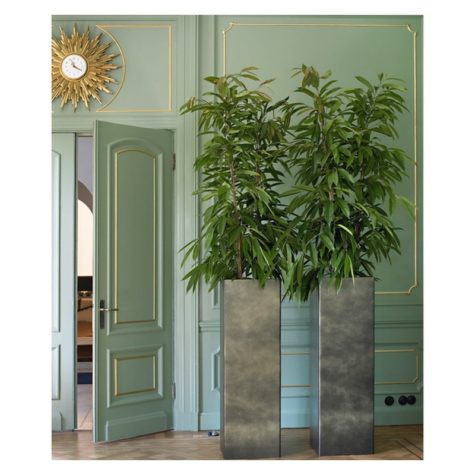 There are 3 types of Ficus Alii: the standard tree, the bush and the braids (several entwined trunks.)
There are 3 types of Ficus Alii: the standard tree, the bush and the braids (several entwined trunks.)
Boston Fern
- Scientific Name: Nephrolepis Exaltata “Bostoniensis”
- Removes: Most pollutants, especially formaldehyde.
- Benefits: Beautiful and lush, a favorite for any home or office.
It does require attention in order to thrive.
Peace Lily
- Scientific Name: Spathiphyllum sp.
- Removes: Alcohols and acetone, Trichloroethylene, Benzene and Formaldehyde.
- Benefits: Beautiful plant with gentle white flowers, easy to care for.
Strong and peaceful energy.
Lucky Bamboo
The lucky bamboo is one of the most popular feng shui cures for home or office. You can see quite a few types of feng shui lucky bamboo in most floral shops nowadays. However, the lucky bamboo in feng shui applications is often one of the most neglected feng shui cures, too.
I have seen countless of feng shui “lucky” bamboo plants that are struggling to survive, have a poor neglected look, and the only luck in them is the “lucky to be alive” factor!
Even though easy to care for and a very tolerant plant, the feng shui bamboo still needs your love and attention, as it likes to look good, just like you do. Do not be afraid to touch your lucky bamboo and take good care of it.
Ultimately, the feng shui lucky bamboo is considered lucky because of its peaceful vitality and strong growth, so it is best to learn to take really good care of it, just like you take care of all your other plants.
- So why is the feng shui lucky bamboo considered lucky?
Bamboo in itself is an amazing plant that brings a very peaceful and wise energy into your home. It teaches the ultimate wisdom: how to be flexible and hollow (open) on the inside so that the spirit can freely flow and heal your being.
If you are lucky enough to have bamboo growing in your garden, you know how soothing, almost transcendental, the sound of it is. The same is true for bamboo feng shui wind chimes, as well as the energy of bamboo floors.
Generally, here is why this specific feng shui cure is considered lucky; this will help you see if the feng shui lucky bamboo you bought at the corner store fits into this category.
A little indoor bamboo plant is considered lucky in feng shui when it combines/represents all five feng shui elements, as these elements are considered to be the foundation of a harmonious universe.
The five elements in feng shui are Water, Wood, Fire, Earth and Metal. Here’s how the feng shui elements are expressed in a lucky bamboo feng shui cure:
- WOOD: the bamboo plant expresses the feng shui Wood element (all plants do).
- EARTH: the rocks that create the foundation of growth for the lucky bamboo represent the Earth element.
- WATER: the water the bamboo needs for its vibrant growth is obviously representing the Water element.
- FIRE: the feng shui lucky bamboo plants usually have a red ribbon tied to them (red color is the expression of the Fire element).
- METAL: the glass pots that most lucky bamboo plants come with represent the Metal element. If your feng shui lucky bamboo is planted in a ceramic pot, it will usually have either a metal coin (Chinese coins for good luck), or a metal figurine, such as the Laughing Buddha.
The number of stalks in the lucky bamboo as a feng shui cure has a specific meaning that is taken into consideration when placing the lucky bamboo plant for good feng shui. You can sure have as many stalks as you feel will look good in your space, but generally, there are some guidelines to follow when you want to use the power of numbers for good feng shui.
Here are the most popular numbers of lucky bamboo stalks:
- 2 for Love and Marriage
- 3 for Happiness
- 5 for Health
- 8 for Wealth and Abundance
- 9 for Good Fortune.
Where should you place your feng shui lucky bamboo?
The best feng shui placement of your lucky bamboo plant is in your Wealth and Money or Health and Family bagua areas. If you are working with the classical feng shui bagua, these are the Southeast and East feng shui areas of your home.
Crystals
Crystals are the absolute darlings of feng shui, and I mean the natural rock crystals, untreated and unfaceted. There is such a variety of crystals out there, many of them really affordable; all waiting to adorn your living room.
Natural crystals bring the grounding energy of the earth feng shui element, much needed with our modern lifestyle.
Family Photos
Displaying happy family photos is great feng shui for your living room. It creates happy, warming energy that spreads throughout the home and uplifts your mood on occasional sad or stressful days. East area of your room is the best spot to display family photos but anywhere in your living room is still excellent feng shui.
Buddha
The serene and peaceful presence of Buddha can grace your home with more peace and real, meaningful moments. There are many Buddhas – from Kwan Yin to the Medicine Buddha, from White Tara to the Laughing Buddha.
There are also many specific Buddha mudras you can choose for your living room decor.
Fire and Passion
Fire is the element of passion, excitement, joy, warmth and love. It makes it easier to connect with your loved ones and truly enjoy their presence. A good and balanced fire feng shui element also helps you be genuinely present in this moment instead of being stuck in what happened a couple hours ago (or worrying about an imaginary future).
Be sure you find your own expressions of the fire feng shui element for your living room – be it with wall art, pillows, and throws or a beautiful rug.
- Candles
Candles purify the energy of negative residues, as well as make any room more calm and peaceful. They also bring a quiet sense of romance and joy, so be sure to grace your living room with a few candles in beautiful candleholders. Of course, candles are also the expression of the fire feng shui element – the element that many of us need to keep and nourish in our relationships with others (and ourselves, too).
By fire energy I mean a solid, nurturing, warm, life-giving fire energy – not the destructive, hollow and angry one. There is a fine balance with all your feng shui decor solutions – you just have to play and experiment until you find the right balance for your living room and for your family.
Other considerations
- Should be visible as soon as entering into the door.
The living room should be visible as soon as entering into the door. According to Feng Shui knowledge, if the living room is behind the bedroom or kitchen, your life will have no privacy, leading to digression and mistakes in work or business.
- Should be in the center of the house.
As a place for the whole family, the living room should be in the center of the house. If a bedroom is transformed from part of a spacious living room, the living room will be the worst one.
- Layout should be rectangle or square.
The overall layout of the living room should be a rectangle or a square rather than the irregular or polygonal spatial pattern. The square living room will improve your luck in terms of both blessing and wealth, and also make the infinite positive energy staying in the home.
- Wealth Direction
You should pay special attention to the wealth direction which is generally at the oblique 45℃ position facing the living room as soon as you enter into the door. The wealth direction should be tranquil and avoid a water dispenser, audio equipment and other shaking items, or your will have your wealth affected and suffer from financial loss.
- Furniture Placement
The furniture should be placed properly. According to Feng Shui knowledge, the storage cabinet in the living room should cling to the wall and the sofa should face the door or TV, and never have its back to the door.
If the sofa backs the door, your interpersonal relationship will be disharmonious and you may easily encounter villains or have disputes with others.
- Avoid Beamed Ceilings
If the living room has a spanning beam, the ceiling should be covered with decorations, or the beam will bring you the sense of pressure and bad luck and make you nervous.
Here’s a nice fix:
- Floor should be even.
The living room floor shall not be uneven; instead, it shall be flat and avoid too many too many stairs or the sense of high and low. Some living rooms adopt the design of high and low partition to make the obvious change of high and low floor. However, this kind of design makes the family luck full of ups and downs.
- Living Room and Doors
If you are sitting in the living room can see the doors of all rooms, the privacy will be poor and you may feel open to the external world.
- Decoration
The living room should be decorated with the circular-shaped decorations since it is a family and friends gathering place requiring the lively and harmonious atmosphere. The circle is a symbol of Yang and dynamic, so the circular-shaped lighting, ceiling and decorations can create the warm and lively atmosphere.
But wait, there’s more!
Here’s a small gallery of living rooms that I didn’t find a place for in the post. Enjoy!
Sources:
Dining Room Feng Shui
A feng shui dining room is one that arouses hunger, brings harmony, strengthens the bond among family members, attracts prosperity, enhances wealth and a whole lot more.
In feng shui, dining rooms are given a very high degree of importance and that’s because it’s “The Room” where a family is “supposed to” dine and spend a real quality time together.
I said “supposed to” because in most houses dining rooms are seldom used (for dining) and they – tend to – become “dumping rooms” for all sorts of things that can’t find a place elsewhere in the home; here’s a list of few – really few – items that are usually dumped in dining rooms:
- kid’s toys
- old cabinets
- seldom used travel bags
- laundry clothes
and the list goes on and on…
However, you must understand that piling all these items – that don’t actually belong – to the dining room has a very negative effect on feng shui of the dining room. In fact, piling clutter in any area of a home or office is bound to deteriorate feng shui for that area because they restrict the free flow of Qi energy in the house.
For good feng shui in the dining room:
- Make sure that the dining room is inviting, comfortable, hunger arousing and calm.
- Maintain balance of colors in dining room; don’t make it too bright or overly dull.
- Dining room must be well ventilated and it should receive plenty of sunlight.
- Hang a mirror in dining area such that it reflects the dining table; this’ll bring in more prosperity.
- You can provide a wash basin in North or East of dining area.
- Keep the dining room as near as possible to kitchen.
- Have kitchen and dining on the same floor.
- If your kitchen is really huge then utilize an area of the kitchen as dining area.
- If the dining room in your home is a part of living room (a common case nowadays) then put curtains or potted plants as a line of demarcation.
- Go for a square/rectangular or oval/circular dining table.
- Make sure that the dining table is of high quality wood.
- The dining table must be big enough to provide space for everyone.
- Keep the number of chairs even.
- Keep sitting arrangement such that no one’s back is towards a door or window as it causes a sense of insecurity.
- East facing is good for head of the family; other members can face North, East or West while dining.
- Be polite and gentle to family member while dining; be gentle and polite always.
- Be relaxed, calm, happy and stress-free while dining; in fact be this way always.
- Always keep something on the dining table; you can keep fruits on it; apples help develop friendship, pears are good to attract positive energy, peaches aid in good health and oranges symbolize richness and prosperity.
- If fruits aren’t your choice then you can keep flowers on dining table. Just make sure not to use dried flowers, they imply deterioration.
- Make sure to have meals with your family daily; however, if that’s not possible then at least have a meal together once a week.
- Images of mouthwatering and lip smacking dishes in dining room arouses hunger.
- Always thank God before you start eating.
Here’s What to Avoid:
- No toilet doors in front of dining table or dining room.
- Make sure that dining room door and house entrance doesn’t face each other.
- Make sure that the dining room doesn’t become a room of dining etiquette for anyone; else they’ll lose interest in eating.
- Never sit under a beam while eating.
- Please avoid TV and other electrical instruments in the dining room; this’ll make the family to spend some quality time together.
- Avoid low ceiling in dining room.
- Avoid negative paintings such as weeping girl, war, crime etc. in dining room; in fact avoid them everywhere.
- Avoid hanging clocks in dining room; they tend to create haste while eating.
- Never eat in dark.
- Avoid eating alone; that increases loneliness. Put on some soothing music if you’re alone.
- Avoid irregular shaped dining tables such as, diamond or hexagonal shaped ones.
- Avoid glass top dining tables as they’ll bring in nervous energy.
- Avoid dining tables that have cushions on top; go for hard top dining tables as they represent solid foundation.
- Never place the dining table touching a wall; it must be away from any wall so that everyone can sit comfortably.
- Avoid rocking chairs in dining room.
- Avoid facing south while eating.
- Don’t allow kids to sit in the South-West corner of dining table.
- Never use or even keep broken or chipped utensils or glass wares.
The Dining Room Table – Shapes and Sizes
There are two criteria to look at when choosing the best shape for your dining table.
- Best visual choice. What is your dining room asking for? What table shape will look and work there the best?
- Best bagua area match. If most shapes would work, then decide based on the feng shui bagua area of your dining room.
From a general feng shui perspective, a round or oval table is considered better than a square or a rectangle one. The reason for it being the flowing shape that contributes to a more even distribution of energy, so to speak. In simple terms, sitting at a round or oval table will make everyone feel more welcome, at ease and equal in their relating to each other.
However, the first criteria to look at is your dining room size and shape. If your space is asking for a square or rectangular shape and you insist on having a round table, you will not be creating a good feng shui dining room.
Good feng shui always starts by listening to your home, and then applying the best feng shui guidelines to it.
So, if you feel that a square or rectangle table would work better for the of your dining room, go for it because it is also good feng shui, just be sure to buy one that has rounded corners. Sharp corners are always best avoided as they create bad feng shui energy called Sha Chi.
Here are the best shapes for each bagua area of a dining room:
- East – Rectangular or Square
- Southeast – Rectangular or Square
- South – Rectangular
- Southwest – Square
- West – Square or Round
- Northwest – Square or Round
- North – Round
- Northeast – Square
- Center – Square
This selection is based on the play of the five feng shui elements and how they either support the energy in a specific bagua area or weaken it.
A couple more details to look at while selecting a good dining room table are as follows:
- The table should be in proportion to the room
- It is considered best to have an even number of chairs (unless you go for a round table).
- Best feng shui chairs are the ones with a solid back.
As the dining table is one of the most versatile and functional furniture pieces in your home, I would suggest taking your time and doing some good research. Ask where the table is made and who made it.
Buying locally, whenever possible; this is always a good idea and excellent feng shui, too. Invest in good quality wood and try to avoid a glass top dining table.
Dining Room Size for Chi Flow
The best feng shui dining room is spacious. There should be enough empty space to allow the chi energy to move about the room freely. Avoid blocking doorways, windows and the natural flow of traffic in and out of the room.
This free flowing chi energy will usher in abundance both in the health and wealth areas of your life. A minimum of 2.5 feet should be given around the table to allow guests to move their chair away from the table. If you can afford more space, all the better.
In traditional Chinese feng shui a dining room relates to wealth. In Chinese culture there is a straight correlation between the size of the dining room and wealth: the more people we can feed the wealthier we are!
Location and Feng Shui Design Aspects
The best location for the dining room is near the kitchen. This is a practical location as well as a feng shui one to maximize the benefit of chi energy.
Ideally, the dining room should be in the corner of your home. This location, like high-pitched ceilings, allows for the chi energy to collect and circulate in this space.
The most auspicious location of a dining room within a house is considered to be southeast and south. Not surprisingly these two directions relate to wealth and fame.
Dining Rooms Close to Front Doors
If your dining room is located too close the front door, try to separate it as much as possible. Keep the dining room door closed or use a decorative screen to block the front door from view. In feng shui, a dining room too close to the front door means chi energy can leave too easily and won’t fully enter the room.
Choosing and positioning the table
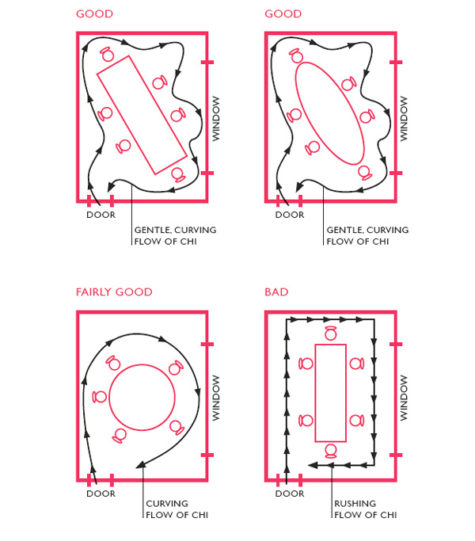 Your dining table should be large but fit comfortably in the room. Oval or round shapes are best, but if your table is rectangular, you can balance it with rounded shapes such as rugs in the rest of the room. It’s best to place the table at the center of the dining room and turn it at a slight angle in relation to the walls, so the chi will flow in a gentle, curving path around the room. If you put the table straight and parallel with the walls, the chi will be channeled in a straight line through the room or around the edges, and may get trapped in the corners.
Your dining table should be large but fit comfortably in the room. Oval or round shapes are best, but if your table is rectangular, you can balance it with rounded shapes such as rugs in the rest of the room. It’s best to place the table at the center of the dining room and turn it at a slight angle in relation to the walls, so the chi will flow in a gentle, curving path around the room. If you put the table straight and parallel with the walls, the chi will be channeled in a straight line through the room or around the edges, and may get trapped in the corners.
Seating arrangements
In feng shui, it’s good practice to seat the oldest family member or an important guest in the “honoured guest” position at the table. This is the seat furthest from the door, with solid walls behind it and offering a good view of the door and windows. If possible, place all the seats so that no one has his or her back to a door or large window, because this “weak” position may leave that person feeling insecure. This problem is especially likely with round tables.
Setting your table
In general, plain colours and simple shapes are best to promote the calming energy you need around the table. If you prefer a pattern, opt for one based on just one or two main colours. Vertical stripes are ideal because they symbolize uplifting energy. However, busy patterns splinter the chi. To get the most benefit from your tableware, keep items in good condition and discard any chipped plates, bowls or glasses.
Table displays
A rounded bowl filled with rounded fruit, in the centre of the table, is excellent feng shui; the more food you show, the more “richness of life” you possess. Many fruits have special significance: you could choose apples to boost friendship, pears for energy, peaches for health and oranges for richness. You can include other favourite fruits as well. Flowers are also a lovely decoration. Yellow ones are ideal to enhance communication. Silk, paper or plastic flowers are also fine. However, don’t use dried flowers because they represent decay and stagnation.
Lucky energy
The table and the area around it need to be “loaded with luck” (chuang ho hsing yun). Healthy, beautiful plants are a must in the dining room! They bring vitality, freshness and color., and nurture goodness in the chi. I especially like using larger plants with rounded leaves and flowers. Cut flower arrangements are fun to make and are also great in the dining room.
Keep electrical items, including TVs and stereos, out of the dining room; their energy is too yang. In addition, remove any clocks, because they are unwelcome reminders of the passing of time. A dining room should be “eternal” (yung yuan te).
The best material for a dining room table is wood. I do not recommend metal or glass tables since they are cold and do not hold energy.
Here’s an example of a beautiful but very cold dining room:
Lighting
Lighting needs to be soft and calming. Wall-mounted lights equipped with dimmer switches are a good idea, because you can alter the lighting levels to suit your mood or a special occasion.
- Use Lighting to Attract Yang Energy
In feng shui, the chi energy is comprised of the negative and positive energies of yin and yang respectively. The yin (female) chi energy is passive/restive while the yang (male) chi is active/energetic. Lights attract yang energy and you want to activate this dynamic energy for this room.
Recessed lighting is subtle and can also be used as direct lighting for wall art and paintings or simply placed on a dimmer switch for ambient lighting options. Torchiere floor and table lamps are great for uplighting to attract chi energy toward the ceiling and allow more energy to flow into the dining room.
A chandelier above the dining room table is the ideal choice of lighting. A crystal chandelier will activate the energy in the room and create an uplifting sparkling feeling. I love to dim the overhead light and use a lot of candles during family and guests gatherings. It always seems to slow down the time and have a magical, relaxing and mood enhancing effect.
Generate Abundance with Mirrors
One of the best kept secrets of a feng shui dining room is the use of mirrors. The mirror should be placed to reflect the dining room table top. This placement doubles the food (abundance, health and wealth) and is considered one of the most auspicious element in a dining room design. However, a mirror should never reflect a kitchen or bathroom or it will double bad energy from these areas.
A mirror will also soften the light. Choose one with a suitable frame for that sector, or with beveled edges.
Mirrors are also great to use in the dining room if they can be hung in a way that reflects the outside. Try to position a mirror to reflect a garden, tree, or anything special to you from outside. You can also use the mirror to reflect a beautiful piece of art or a flower arrangement from the center piece on a dining room table.
- Mirror Height
Be careful not to hang the mirror so that it cuts off the heads of dinner guests’ reflections. This placement is considered inauspicious and brings ill health.
- Floor Mirrors
A floor mirror that extends well beyond chair height is a good choice. Just be sure that it isn’t placed opposite the dining room door or reflects the front door, kitchen or bathroom.
If you’re brave and want to add walls of mirrors, don’t use mirror tiles. Instead opt for full length large mirrors.
- Mirror Placements to Avoid
A mirror opposite a front door will bounce all chi entering your home right out the door, never allowing it to enter your home. In feng shui, if the mirror is opposite the door leading into the dining room, chi energy will never reach inside the room and can mean inauspicious results for family health and wealth.
The water of life
Clean, flowing water symbolizes luck, energy, health and “richness of life”. A small water feature or aquarium will benefit most locations. Alternatively, you could have one or two water symbols, such as shells, or a picture of flowing water.
If you have a southeastern wall in your dining room you can use water to enhance your wealth by placing a wall fountain or a fish tank. However, don’t use water items in the northeast, south or southwest; they clash with the chi of these sectors.
Goldfish signify luck, and are ideal for an aquarium. Three or nine are the most beneficial numbers; include one black fish to represent protection. If you like tropical fish, have golden platys and a black mollie.
Good Feng Shui colors for dining room
Dining room wall colors should be warm, earthy and have a nourishing vibe. For example, yellow stimulates conversation and digestion, red stimulates appetite, and sage green brings freshness and vitality. A cold blue color would is the least appropriate for the dining room walls and décor.
- Here is a collection of colorful dining room ideas:
You can add colors to jazz up your dining room decorating with fabrics, bright tableware, crystal glasses and accessories. Napkins and table cloth designs and colors should be selected in accordance with the dining room table position. Feng Shui room decorating guide suggests blue color for the table in the northern zone of the dining room. Greens are Feng Shui colors for the eastern parts of the room and the house.
For large areas such as walls, single colors are best. You can always use ornaments and pictures, or a display area with items that suit the location, to add splashes of brighter colors. Try to avoid having highly patterned wallpaper, which can splinter the chi. If you already have this problem, remedy it by putting up abstract pictures in strong, plain colors appropriate for the location.
If you prefer neutral colors or like stylish dark or elegant white table cloth, try to add more Feng Shui colors with napkins, flowers, candles, napkin rings, tableware and vases to spice up your dining room decorating design.
I love the way the chairs and the rug in the above photo provide a nice burst of color while the rest of the dining area is pleasantly neutral.
There is another important Feng Shui room decorating detail, – coasters should correspond to the shape of the table in Feng Shui home. If you have a round dining room table, use round coasters and get oval for the oval dining room table, and so on.
One of the most important and easy to follow Feng Shui tips for dining room decorating: never use cracked or chipped plates and glasses. Ancient Feng-Shui teachers say that it brings troubles into the house. Also they suggest to serve glasses with transparent liquids for dinner. Shiny glasses make attractive table decoration and can play the role of individual Feng Shui crystals that stimulate the positive energy flow and attract wealth.
Dining room usage:
Ideally, the dining room should be used often and free of clutter. You may want to say goodbye to those projects and piles of papers that have been residing on a dining room table for several months.. If you don’t use the room and it’s cluttered, the energy stagnates which can cause stagnation in your finances.
Art in the dining room:
Choose art for your dining room that gives you a feeling of wealth and abundance. It’s personal but some examples that work for me are landscapes, seascapes, fruit or flowers. Your choice of art should also reflect the elements needed to enhance wealth in the particular space.
Pictures that give you feelings of pleasure and abundance will also help; good subjects include bright flowers, rounded fruit and sunny landscapes.
Sources:
Kitchen Feng Shui
Your kitchen is the feng shui part of the home that nourishes and sustains life. Feng shui-wise, it is the most important part of your home. The kitchen is also a feng shui symbol of wealth and prosperity. This is why one of the first rules for good kitchen feng shui is to avoid having your kitchen close to the front door or to the back door, where the chi (good energy) can easily escape.
- We all know that the food we eat gives us energy.
For this energy to be of high and healing quality, the food needs to be prepared in a harmonious and well-organized kitchen; a kitchen that has a balanced flow of Sheng Chi, or good feng shui energy.
Good nutrition is good feng shui, so add healthy, organic foods to your diet, especially fresh fruits and vegetables. Besides the high nutritional value, organic fruits and vegetables carry strong healing vibrations from the earth; a quality of energy that your body dearly needs.
As we constantly exchange energy with our surroundings, a good feng shui kitchen leads to a good spirited chef, which, in turn, leads to good energy meals for a happy family!
Here are a few more basic good feng shui kitchen guidelines:
- The kitchen should have several levels of proper lighting, be airy and spacious, clean, bright and welcoming.
- For good feng shui, keep the kitchen simple and do not overload it with gadgets.
- Keep clutter at bay.
- Fresh flowers bring beautiful uplifting energy to your kitchen. Place a bowl with fruits, a vase of flowers, or a living plant on your kitchen table, windowsill, or wherever the layout of your kitchen allows.
Choose colors that blend well and feel good together. Feng shui-wise, the color yellow is a good choice for the kitchen, as it is good for your digestion. You can choose this color as light as “butter yellow” or as vibrant and strong as “squash yellow.”
The kitchen was considered to be the heart of the home since ancient times; use feng shui to make it a happy and healthy heart! Follow these simple feng shui tips and create a home where family and friends continue to share many beautiful moments together.
Even if your current kitchen is in a challenging feng shui location, you can still do your best by applying basic feng shui tips, as well as constantly creating good, fresh and vibrant energy full of love and care.
This good energy you create in your kitchen will come back to you tenfold, so it is an excellent investment in your health and well-being!
The location, design and feng shui basics of your kitchen are all considered very important in a good feng shui floor plan. In fact, your kitchen is part of the so-called “feng shui trinity” – the bedroom, the bathroom and the kitchen – because of its utmost importance for your health and well-being.
Location.. Location… Location…
So, what is the best feng shui positioning of a kitchen in a good floor plan and what is the worst one?
The worst feng shui positioning of a kitchen is the one where the kitchen is close to the front door and is the first view you see as you come in. Please note this does not apply to a kitchen further away from the door that you can partially see from the front entrance; this only applies to a floor plan where you literally come home through a kitchen.
Even in this case, there are better and worse scenarios. An oven that you can see from the front door, or aligned with the front door, is considered very bad feng shui. It is a bit better if you see a nice view of your kitchen, let’s say a kitchen island with some flowers on in, or a little herb garden for good feng shui.
Another bad feng shui floor plan kitchen location is a kitchen either under the bathroom or facing the bathroom door (a bathroom door in proximity to the oven or kitchen island is the worst).
The reasons here are plain common sense – the two energies should be kept apart and never mixed.
The last bad feng shui kitchen location is a kitchen very close to the staircase – these two energies are opposite each other and are best kept at a distance.
Moderately challenging kitchen locations are a kitchen very close to the laundry room or the garage, but these scenarios are much easier to work with and improve.
There are several elements that are important in the actual design of the kitchen. The designer triangle principle – where the oven, the fridge, and the sink form a triangle – is good feng shui and well-known to many. Less known, but very important feng shui factor is to avoid having your oven positioned in the way where you cook with your back to the door.
- How important is the stove or oven mouth direction for feng shui?
An important feng shui point regarding the stove location and positioning is to have the stove placed in a way that allows you to have a good view of your kitchen. Cooking with your back to the incoming flow of energy is not good feng shui.
Unless you can actually change the location of your stove, let’s say if you plan to use feng shui in renovating your kitchen soon, I would suggest not worrying about the direction of the oven mouth.
The first and most important aspect in feng shui regarding the stove is its location in the bagua map of your home.
As the stove represents the fire feng shui element, it is best to have it in a location that is compatible with or is not damaged by its fire energy. Usually, South and Southwest are considered ideal feng shui spots for the oven.
- When a kitchen door faces the bathroom door:
Having the kitchen and the bathroom doors face each other is considered very bad feng shui, indeed. One does not need to know much about feng shui to intuitively understand that this is not a good set-up for a healthy home.
When two doors are opposite each other, the feng shui energies flow very fast in and out of the spaces that are guarded by the doors. This is why another direct door alignment – the front door aligned with the back door – is also considered bad feng shui.
What you have in the case of a bathroom door facing the kitchen door is the energies of the bathroom (release, purification, letting go, etc) mingling with the precious energies of the kitchen (nourishment, cooking, warmth, love & support).
In practical terms, you have the undesirable odors from the bathroom affecting the energy of the kitchen, which is the heart of the home. In more complex terms, you also have the energies of the water feng shui element of the bathroom going against the fire feng shui element of the kitchen.
It will be harder to maintain optimum health and loving communication levels in a house with this set-up, but it does not mean you cannot do your best to even slightly improve the situation.
Your goal is to create as much division as possible between the kitchen and the bathroom, and here are 5 simple feng shui tips to consider if you cannot move out or plan a renovation.
- Always keep the bathroom door closed. This will help keep its energies from spreading into the whole home, and especially into the kitchen.
- Be sure your bathroom is always clean and a pleasure to be in, meaning it has really good feng shui energy.
- Find a creative way to define the boundary between the bathroom and the kitchen. For example, you can experiment with a divider screen, a tall plant or a bamboo curtain (if your kitchen has an open entryway) or have doors with no glass (if the kitchen doors have glass inserts).
- Choose different wall paint color on the two opposing walls — the kitchen door wall and the bathroom door wall. This can work well to define and energetically separate the two areas.
- Creating a focal point in between the two areas will draw the energies away from mingling and bring a sense of beauty. Work with big scale art and choose colors and images according to the feng shui bagua requirements for each specific area.
Once you understand what needs to be done and experiment with various solutions, you might find many more ways to improve your current situation.
If you own a home, look into the possibility of at least a minor renovation to remedy this situation. And, if you rent, you will sure be wise to avoid this set-up again! Understanding what makes a good feng shui floor plan and what is the best placement of all rooms in the house can help you make good decisions in the future.
If your kitchen is very small
The kitchen is considered the heart of the home not only in feng shui, but in many, if not all, old cultures. Feng shui wisdom adds the element of the state of your kitchen reflecting the state of your health; as well as attracting the flow of wealth and abundance into your life.
The kitchen is also a part of the very important feng shui triangle – the bedroom, the bathroom and the kitchen – which is directly connected to the state of your health and well-being.
What do you do, though, when your kitchen is very small and it seems like you can never keep it clean or find enough space for all your kitchen supplies?
If you have a difficult time with people putting things away and keeping it clutter free, it may mean that you have more items than your kitchen can accommodate.
Decide on the very minimum you can get away with and have “a place for everything and everything in its place”. I know this is much easier said than done, but see if you can pack some items away to improve the feng shui energy of your kitchen.
One feng shui decor element that usually works for a small kitchen is, strangely enough, to have some open display shelving. This little feng shui trick opens up a small, confined space and lightens the energy by creating a better flow.
Of course, with this comes the added issue of keeping the open shelves clutter free. It is good to know, though, that for good feng shui your whole space has to be clutter-free, be it visible or not.
You can also consider repainting the wood cupboards in a lighter color, such as white or pale butter yellow , whichever color works best with all the other elements in your kitchen (the countertops, the floors, etc.)
With a small kitchen smart lighting becomes crucial, so be sure to not limit yourself to one boring, energy draining typical ceiling fixture. Experiment with different levels of lighting and sense the change in energy each one of them brings. For a space to have a better quality of energy, at least 2-3 layers of lighting are recommended; this is especially important for a small kitchen.
Mirrors, of course, are one of the best feng shui solutions for small spaces and are sure called the aspirin of feng shui for a good reason! Find a way to place a mirror in your kitchen so that it brings more light and visually expands the space.
Be sure to also have some fresh energy in your small kitchen, be it a small container garden with aromatic herbs, or just some fresh fruits on display.
Most of all, keep it clean and keep it simple, and find many ways to fall in love with your very small kitchen. It is definitely possible.
Feng Shui of Kitchen Plates Shapes and Colors
Round is the feng shui shape with the most flow, or harmonious movement. This is not to say that square shaped plates are bad feng shui, not at all, just different energy, slower, more grounding.
- What colors and shapes of plates should I use in my kitchen for good feng shui?
- What plates should I use in my kitchen for good feng shui?
- Are round dishes better feng shui than the square ones?
- What color is best feng shui for plates, or does it depend on the kitchen location?
This is an interesting kitchen feng shui question, but I have to start with this: there are really no shoulds in good and successful feng shui applications.
It is always best to go with what you love and are drawn to.
This especially applies to your kitchen and your bedroom, as both places, feng shui-wise, are directly connected to your well-being; and only you know what makes you feel happy and nourished. Start with your own preferences, then see how they compare with the general feng shui guidelines.
In the course of understanding deeper levels of feng shui, you may feel drawn to make subtle (or not so subtle!) adjustments to your feng shui choices, but first always be guided by your feelings.
So, to answer your question with another question I would ask: “What plates do you like the most in your kitchen? What colors are you drawn to the most while dining?”
Personally, I use white plates, mostly round ones. I think white color it is the best energy foundation for the beauty and nourishment of the food that is served on these plates. You will also notice that good restaurants always use white plates.
To me, a clean white plate is like a fresh canvas waiting for the next masterpiece.
Round is the shape that has the most flow or harmonious movement, thus a fresh energy most suited to maintain, present and enjoy food. This is not to say that square shaped plates are bad feng shui, just a different energy that is slower and more grounding.
I guess one could say that square shaped plates make you slow down more.
Color-wise, I would say the best choice would be based on your personal preference, unless you have a big collection of dishes on display. In this case, you would like to have colors appropriate for your kitchen decor scheme, as well as for the bagua area the kitchen is located in.
Generally, blue is a good color for dishes when one is trying to lose weight; while red, orange and yellow will stimulate the appetite.
Herb Garden Tips for Feng Shui Kitchens
If you love your fresh herbs, I know you will find the best feng shui spot for the little herb garden in your kitchen. Best containers are of the earth feng shui element – try to avoid metal or plastic containers.
One of my most favorite ways to create great energy in my kitchen is with aromatic herbs.
Creating your own little herb gardens can be a really enjoyable process with numerous benefits. I enjoy cooking, so the smell of fresh herbs in the kitchen is heaven for me (great feng shui!)
I love the energy that fresh herbs bring into the kitchen.
Basil, rosemary, thyme, mint and lavender are my all-time favorites, but I also try to include something new every year. Check the 5 best herbs for a cook’s container garden for some great tips.
The vibrant, alive energy of herbs connects you to what matters the most – the simple, the good things in life. It’s a reminder of the nourishing power of the earth in all its beauty.
Growing Herbs in the Kitchen
If you want to enjoy a continuous supply of garden-fresh herbs in your own kitchen, keep these tips in mind.
- Choose plants carefully.
Opt for small-leaved herb varieties when possible, as they do the best indoors. In basil, for instance, you’ll find Fino verde, which has half-inch leaves. Some herbs naturally have small foliage, like oregano.
- Where to get the plants?
Buy established herb plants in the nursery or via mail-order, or grow your own from seeds or cuttings. You can grow basil year-round by periodically letting older plants go to seed and then scattering the seeds in the pot. To grow mint, use root cuttings.
Start herbs from seed in a soil-less potting mix in a warm location. Hasten germination and get the plants off to a good start by growing them on a seedling heat mat. Once the herbs reach two inches high, take them off the heat and repot them in regular potting soil.
- Provide plenty of light.
Most herbs grow best in a bright location, such as near an unobstructed southern window. Eastern and northern windows can also work, if you provide supplemental light from full-spectrum lighting. Western windows receive afternoon sun, but get warm and may burn foliage, especially in the summer months.
If your kitchen is windowless, grow herbs in a hydroponic growing system that comes with its own special lighting.
- Ensure air-circulation and cool conditions.
Herbs grown in stuffy, warm rooms attract pests like scale insects and mealybugs, and they grow weak and spindly.
“Herbs don’t like it warm in winter, even if you do, so place them in cool areas, such as on windowsills,” says Denise Schreiber, greenhouse manager for Allegheny County Parks in Pittsburgh and author of Eat Your Roses. “Air circulation is also necessary,” she says. “Locate the herbs near an overhead fan or in an area of the kitchen that receives air movement from another room.” Cracking windows open occasionally also helps.
- Watch watering.
Avoid overwatering your indoor herb garden or letting pots sit in trays of water, as soggy soil will quickly lead to root rot. Water when the first inch of soil dries out.
- Rotate often.
Leggy, weak growth is a common problem with indoor herbs. Help ensure they grow straight and strong by rotating the plants once a week so that all sides receive adequate light.
- Fertilize monthly.
Keep your herbs growing healthy and strong by feeding them on a regular basis with a half-strength solution of a well-balanced, liquid fertilizer, such as a 15-15-15.
- Prune regularly.
Fortunately for your cooking, herbs require frequent pinching for the plants to stay bushy and healthy, so make sure to prune often. The more you pinch, the more the herbs will grow, and the tastier your cooking will be.
- A Few Helpful Growing Tips
When buying herbs for indoor growth, it’s best to purchase plants that haven’t already been growing outside. The shock of bringing them indoors can cause trauma and affect growth and production. Remember that winter is a natural resting phase for plants, so it’s unrealistic to expect abundant growth. Try minimal watering and let them do their thing. Clipping them regularly will promote further growth so clip away—remember, you’re growing them to use!
A common mistake is to plant all herbs in one container. This inhibits growth and in the case of an invasive herb, you’ll likely witness an herbal blitzkrieg in your container, so plant each herb in its own container. Containers should have ample drainage holes in the bottom and since herbs can be susceptible to fungus, allow them to breathe by using terracotta pots, no smaller than six inches in diameter. To allow further ventilation, place pots in a container of small pebbles.
Always use a high-quality organic potting soil that contains vermiculite or perlite for adequate drainage. Avoid using soil from the outside, as it contains organisms that are controlled by the outdoor environment. Rosemary, thyme, and basil prefer soil with more lime, so adding a spoonful of crushed eggshells to the soil is beneficial. Though herbs are hearty, they do like to be fed once in a while—especially when growing in limited pot space. Herbs are grown for their leaves not for their flowers, so any fertilizer you give them should promote leaf growth, not blooms. One of the easiest ways to feed your herbs is to add one tablespoon of fish emulsion to a gallon of water and use this every time you water.
Water the herbs at the base, where the stem meets the soil—don’t water the leaves. Water once and let the water drain completely through, then repeat. How often your herbs need to be watered is a matter of watching and learning to read each individual plant. A good rule of thumb is to let the soil dry between waterings. Remember, one of the biggest mistakes in watering herbs is over-watering them; herbs don’t require as much water as a typical houseplant. If you see leaves turning yellow, this is the first sign of over-watering.
If your herbs require supplemental light, clamp-on reflector lights with fluorescent bulbs work best. Clamp the lights to the pot, four to six inches away from the plant. If you see brown spots on the plant, this is a sign of burning and the lights either could be too close or may have been used for too long.
With winter approaching, there’s no need to go without fresh ingredients for warm stews, soups, and herbed crusts and breads. And now is the right time to start growing herbs for any Thanksgiving cooking you may have in store. With minimal space and perhaps some artificial light, a winter garden could provide plenty of fresh winter fare.
The Easiest Herbs to Grow Indoors
If you love your fresh herbs, I know you will find the best feng shui spot for the little herb garden in your kitchen. Be mindful of the containers you use – the best containers are made of earthenware and bring the earth feng shui element; try to avoid metal or plastic containers.
Good luck in creating an aromatic herb garden in your very own kitchen!
- Lemongrass
Technically, you don’t even grow lemongrass, in that it’s not planted in soil, making this one incredibly easy herb to keep in the house. When buying a stalk at your local market, look for plenty of stem and make sure the base is intact. Trim the top and place the stalk in a couple inches of water. The stalk will produce roots and dozens of new shoots.
- Chives
These are one of the easiest herbs to grow indoors, as they do not require much light and are prolific in their production. Chives are easiest to start from an already-established plant. Just pull up a bunch from the established plant (including the roots), place it in a small pot half-full of potting soil, then cover the roots up to the crowns with more potting soil. Cut about one-third of growth off the top to stimulate new growth.
- Mint
Both spearmint and peppermint literally grow like weeds. They’re both very hearty and very invasive, meaning that they can quickly choke out other herbs. Keep in mind that a lot of spearmint is required to produce the same minty effect as peppermint, so if you’re growing it indoors, where space is limited and harvesting is frequent, peppermint is the better option. Start your peppermint plant with seeds—not root or leaf cuttings—in a small pot full of potting soil. Peppermint will thrive in shade, but make sure it’s in a spot where it gets at least a little bit of light each day.
- Parsley
Parsley is one of the most commonly used herbs and is very easy to grow, though the seeds can be difficult to germinate and may take up to two weeks to see results. The good news is it doesn’t require much light or maintenance once you get it started. Keep in mind, though, that this plant is a fairly slow grower, so initial clippings will not harvest a lot.
- Vietnamese Coriander
Coriander is the seed of the cilantro herb. This particular version of coriander is easier to grow than regular coriander, as it’s very hearty and very reliable.
- Oregano
The Greek variety of oregano is easiest to grow; however all oregano requires six to eight hours of sunlight per day, so a well-lit window—particularly one with southwestern sun exposure—is best.
- Thyme
This is another herb that requires six to eight hours of sunlight per day, and it may even need supplemental light. My favorite is lemon thyme, which can be used in place of regular thyme and has a unique citrus-like flavor and isn’t nearly as easy to find as other varieties in stores.
- Rosemary
This herb is very easily over-watered. It prefers to remain on the dry side and does not need particularly rich soil. Several varieties are available; some are bush-like and some are more of a creeping plant. Choose an upright variety like Tuscan Blue or Blue Spire. These will remain more compact, making them a better choice for indoor growing.
- Basil
This is a favorite to use when cooking. However, this herb is one of the most difficult to grow, especially indoors during the winter months. The best varieties for indoor growth are the Spicy Globe or African Blue. The African blue won’t have the wide, bright-green leaves you may be used to seeing in grocery stores; it’s similar to Thai basil with its narrower leaves and bluish-purple stalks.
A gallery of ideas:
Here are a bunch of ideas for nifty kitchen garden containers:
How Can I Feel the Feng Shui Energy?
Good feng shui energy is all around you, it comes in all forms, shapes, and sizes. Basically, you can test the quality of any given energy by the way it feels. You know the feng shui energy is good when you test it with the basic question: does it feel good?
A room does not necessarily have to look perfect in order to have good feng shui energy. No amount of wind chimes, fountains or lucky bamboo plants will bring good energy if the overall good feel of the room is missing.
Creating Good Energy In The Kitchen
Now let’s focus on your kitchen, as this is an ultra important space for your home, as well as for your own well-being, of course! A house with a happy kitchen is a happy house indeed! The kitchen was always considered the heart of the home in all ancient cultures, and feng shui, being an ancient art, is no exception to this rule!
Good feng shui in the kitchen is as important as good feng shui in your bedroom, and for the same obvious reasons – your body is deeply connected to the energy of your kitchen.
There are many ways you can improve the quality of feng shui vibes in your kitchen. It starts with the basics of a clean kitchen with a good flow of air and lots of natural light. Then you can go deeper and find out which bagua area your kitchen is located in so that you can strengthen its feng shui.
Feng shui-wise, the best bagua areas for the wood element of the herbs are East, Southeast and South, but the very first criteria would be the energy flow in your kitchen, including the natural light.
Feng Shui Tips for A Soulful Kitchen
Feng shui in the kitchen is a fascinating topic with almost never-ending options and possibilities in creating good energy in this special area of your home. Of course, in feng shui-ing your kitchen you always start with the basics – clean, clutter clear, follow the logical flow – and then move on to a bit more advanced feng shui levels.
However, what I keep noticing in my feng shui practice is many kitchens with a predominant energy of coldness.
Kitchens that visually look absolutely gorgeous and shine with the latest appliances, but have a very distinct feng shui energy of coldness.
It is very sad if you think about it, as your kitchen is the last place in your home where you would want cold energy.
Actually, no place in your home wants cold energy. Not really, (other than your fridge, of course!) Fire and nourishment are the keywords for a good feng shui kitchen, and soulfulness and warmth are the absolute components to make it work.
Ancient people considered kitchen to be the heart of the home and the keeper of the soul of the space. In many areas, images of special gods/deities are placed in the kitchen and asked to look over the well-being of the family. In feng shui, there is even a deity called the Kitchen God that is much feared amd respected (in traditional feng shui applications).
Now, we kind of think the same about the kitchen.
But mostly in terms of “must-have” latest appliances, gadgets and a seamless look – one might wonder from looking at many home decor magazines if this is a kitchen or a clinical room. We have lost the feeling of the soul of the home and the magic that is created in the kitchen.
If we are to get in touch with it again, to invite it back into our homes and our lives – feng shui wisdom suggest you spend some time re-creating your kitchen.
Ask yourself:
- How does your kitchen feel?
- How does your kitchen smell?
- What is it telling you in the morning?
- And at night?
Experiment with many easy feng shui ways to shift the energy in your kitchen – be it with better lighting, warmer colors or mouth-watering kitchen art. Bring some fresh herbs into your kitchen, display fresh fruits, water bottles, etc, make your kitchen alive with energy.
Use feng shui kitchen tips to invite the energy of soulful nourishment and joy back into your home. Explore the use of colors, shapes, scents, etc, explore and play with them in a creative way. It is your kitchen and it is deeply connected to the quality of your health and your overall well-being.
After all, a home without a soul is not a home, really. Just a structure waiting for more, waiting for a bigger purpose to be revealed. Help your home find that soulful purpose. You will be the one to greatly benefit from it.
Sources:
Feng Shui In The Bathroom
I found this great little article about How A Bathroom Flushes Prosperity & What You Can Do About It. And I thought it was time to take a peek into our bathrooms, especially now that we are making all that wonderfully luxurious and delicious bath stuff.
Bathrooms and toilets have a really bad reputation as far as feng shui is concerned. This is because bathrooms and toilets have the tendency to drain or flush away the positive “Qi” energy of your home.
Hence, if “Qi” enters the bathroom, n rest assured that chances are it’s being flushed right out of your house and we certainly don’t want that to happen.
Since each and every part or corner of a house is related to an aspect of life, a bathroom in one particular corner or part would affect that specific area of life, and without proper precautions, will drain the luck or benefits of that aspect of life.
A bathroom in the center of your home:
A bathroom in the center of the house is usually considered bad feng shui. As the center of the house is the heart of the space in feng shui, also called the yin-yang point, you want to have it open, light and with a sense of beauty to it. Take these steps to fill your center home bathroom with good feng shui:
- Keep the bathroom clean and tidy
- Add art, candles or flowers to the room
- Position several air-purifying plants in the bathroom
- Be aware of the light quality in the room and add a dimmer switch to adjust the light if the room has no window
A bathroom facing the front door:
The reason a bathroom door facing the main door is considered bad feng shui is simple: the Universal energy, or Chi, comes into the house through the front door. If your bathroom is facing the front door, most of the good energy will escape through the bathroom, leaving little or no good feng shui energy to nourish the house. Use these practical tips to improve the potentially bad feng shui situation of a bathroom door facing your front door.
- Keep the bathroom door closed
- Create good feng shui in the bathroom
- Create a focal point near the entry to direct energy away from the bathroom
- Focus on good feng shui in the entry area to enhance the energy in the area
A bathroom in the money area:
A bathroom in the feng shui money area can certainly be a challenge. The first thing to do when you are dealing with any challenging feng shui area is to commit to keeping it very clean and orderly. There can be no good feng shui without cleanliness and order, and this especially applies to a challenging bagua area. Next, you can explore feng shui money area decorating tips and see which ones are possible to apply in your home. They include:
- Decorate the area with lush green plants
- Use pleasant scents, fresh flowers, and candles in the area
- Decorate with images of natural landscapes
- Add a water feature or mirror for good feng shui
A bathroom facing the kitchen area:
Having the kitchen and the bathroom doors face each other is very bad feng shui. You don’t need to know much about feng shui to intuitively understand that this is not a good setup for a healthy home. When two doors are opposite each other, the feng shui energies flow faster in and out of the spaces guarded by the doors. The solution is to create as much division between the two areas as possible. Use these tips:
- Keep the bathroom door closed
- Keep the bathroom clean and filled with good feng shui energy
- Use a divider screen, bamboo curtain or a tall plant to define the boundary between the two rooms
- Use different paint on the kitchen door wall and the bathroom door wall to define the areas
- Create a focal point between the two areas
A bathroom above the bedroom area:
A bathroom located above the bedroom is not good feng shui. An important factor to consider in looking for feng shui cures is how busy the upstairs bathroom will be. Combat the bad feng shui using these tips:
- Limit the upstairs bathroom to occasional use, such as a guest bathroom
- Relocate the bed if it is situated directly beneath the bathroom
- Use very light colors in the upstairs bathroom
- Use design features on the bedroom ceiling such as crown molding or a decorative medallion around the ceiling light
A bathroom over your front door:
If you have a bathroom above your front door, it is very important to take care of its good feng shui, as the quality of energy that comes through the front door determines the quality of energy in the house. Use these tips to address the challenging feng shui of a bathroom over your front door:
- Keep the bathroom clean and tidy
- Strengthen the bathroom feng shui element and keep the door closed
- Create a separation between the two spaces with a bathroom rug or deep color floor
- Position a crystal chandelier in the main entry
- Strengthen the feng shui of the main entrance with tall vertical elements
A bathroom under the staircase:
Stairs have a bad reputation in feng shui, although it isn’t as bad as the reputations of bathrooms. If you have a bathroom located under a staircase, you’ll need to take steps to address this challenging feng shui situation. Both areas require special attention to enhancing good feng shui.
- Keep the stairs well lit and in good repair
- Use light colors for the staircase
- Position a crystal chandelier at the bottom of the staircase for good feng shui
- Move a bathroom located under a staircase if possible
- Keep the feng shui elements of the bathroom strong
- Keep the door to the bathroom closed at all times
- Decorate the bathroom in colors appropriate for its sector
A bathroom in the south-east sector:
Since South-East part of a house is related to wealth, a bathroom in this part will drain away all the money from the house; joblessness, sinking income, increasing debt and even bankruptcy are some effects of South-East bathroom
For bathrooms located in the South-East sector of your home, follow the basic recommendations for good feng shui in any bathroom. Keep the door and toilet lid closed and keep the bathroom clean and tidy. In addition, these tips can improve the feng shui of the room:
- Position several air-purifying plants in the bathroom
- Hang a mirror on the bathroom door (following feng shui mirror guidance)
- Use metallic colored gold, silver or gray rugs, preferably in circular shapes
- Hang a metallic wind chime in the area
- Burn candles in the room frequently
A bathroom in the north-west sector:
The North-West part of the house deals with helpful people and luck from heaven, a toilet in this part will drain away all those from you. No help from anyone, backstabbing, office politics, discredit etc. are some effects of North-West bathroom.
North-West sector bathrooms should follow the basic recommendations for good feng shui. Avoid clutter and don’t position a mirror to reflect the toilet seat. Replace any leaky faucets to prevent them from flushing away money. In addition:
- Use lush houseplants in the bathroom
- Put a container with water in the room
- Use a blue rug on the bathroom floor
- Never use metallic chimes in a North-West bathroom
General Rules For Good Feng Shui in the Bathroom
A bathroom has to be somewhere in the house. Doesn’t it? The answer to that it yes, but remember, it’s vital to minimize – or possibly eliminate – the draining or flushing of chi and the “good” from your life.
The main feng shui cure – and the most solid one – to neutralize the negative energy of a bathroom is to actually take good care of your bathroom. If you focus on creating good energy in your bathroom if you transform your bathroom into a beautiful spa – why would you need protection from its energy then?
There are any ways to create a bathroom that has a clear, fresh and nourishing energy, you just have to put some time and effort into creating good energy, and then maintaining it.
Here is a list of general bathroom tips:
- Always keep the bathroom door closed.
- Make sure to keep the toilet lid closed.
- Replace any torn curtains with new ones.
- Keep the bathroom clean, fresh and airy.
- Use a good air freshener.
- Make sure that the bathroom receives ample sunlight and fresh air.
- Keep windows, ventilators and doors of bathroom clean.
- Get the best essential aromatic oils for a relaxed bath.
If there’s a bathroom in North-East or South-West then;
- Hang a metallic wind chime in the bathroom.
- Make sure that there are no Chinese symbols on the chime.
- Make sure that no one passes or sits under the wind chime.
- Place metallic colored rugs such as gold, silver or grey; circular shaped ones must be preferred.
If there’s a bathroom in South then;
- Hang a crystal ball in the window of the bathroom; the rainbow lights from the crystal will reduce the bad fire energy.
- Make sure to cleanse the crystal ball as it’s going to absorb negative energy.
- Alternatively, you can also use a crystal geode which is a rock with hollow center.
- lace square shaped skin colored rug; you can also opt for yellow, pink or chocolate brown colored ones.
If there’s a bathroom in North then;
- Place some lush green houseplants in the bathroom.
- Put a square shaped rug in shades of green.
If there’s a bathroom in East or South-East then;
- Place glitter lamps in the bathroom and make sure to turn them on for around 2-3 hours daily.
- If glitter lamps aren’t your thing then you can light candles in the bathroom.
- Triangular rugs in shades of red are best for such a bathroom.
If there’s a bathroom in West or North-West then;
- Just place an urn with water in the bathroom.
- Place blue shaded rug; if possible, get a wavy shaped one.
What to Avoid
- Avoid clutter in the bathroom; in fact avoid it everywhere.
- Avoid mirrors reflecting toilet seats.
- Avoid leaking taps and faucets; replace them immediately else they’ll flush away the money.
- Replace broken items, such as, soap dispensers, shampoo bottles etc.
- Don’t keep old and worn-out toothbrushes in bathroom.
- Avoid a bathroom or toilet at the center of home.
- Avoid bathroom door facing bedroom, kitchen or dining room.
- Avoid locating a bathroom adjacent or near to house entrance.
- Never have a bathroom above kitchen or main door.
- Avoid locating a bathroom or toilet under staircases.
- Never place metallic wind chimes in North, North-West or West bathroom.
- Never try to place metallic things in the South-East bathroom; it’ll drain away all the money from house.
Mirrors and bathroom doors:
The reason mirrors are sometimes recommended in feng shui for the bathroom door is because a mirror can make a wall or a door energetically disappear, so to speak.
A mirror also pushes the energy back; this is why, for example, it is always recommended to avoid a mirror facing the main door.
A mirror outside the bathroom door is sometimes used in feng shui as the mirror pushes the energy away from entering the bathroom, thus the energy is prevented from going down the drain. Bathrooms have a very bad reputation in feng shui, so a mirror on the bathroom door became a popular feng shui cure for it.
You have to decide for yourself if a mirror on the bathroom door is something you would like in your home decor scheme. And if it makes sense to you.
If you do love mirrors, the best place to have them is not on the bathroom door, but actually in the bathroom.
Mirrors bring the feng shui energy of the water element, and this is excellent for any bathroom as it cleanses – energetically speaking – and refreshes the stagnant and stale energy. Busy bathrooms create a lot of low or challenging energy very quickly, so instead of trying to pretend that there is no bathroom there – which is the goal of placing a mirror on the door, I suggest to actually deal with the energy of the bathroom in the first place.
Another point to consider is this: when you place a mirror on the bathroom door, you actually make the door disappear, too! And doors are very important in feng shui as energetic guardians of any given space, they create good containers for specific energies.
Sinks:
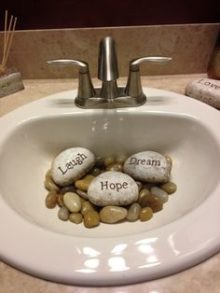 Here is a cute idea for the bathroom sink so that the energy doesn’t simply run away down the drain. Of course, the stones you use would have to be maintained so that they wouldn’t attract anything furry or green… like algae or soap scum, but it’s really a cute idea, and worth doing, if you like it!
Here is a cute idea for the bathroom sink so that the energy doesn’t simply run away down the drain. Of course, the stones you use would have to be maintained so that they wouldn’t attract anything furry or green… like algae or soap scum, but it’s really a cute idea, and worth doing, if you like it!
Important points:
The first and foremost thing about feng shui cures that work is that they have to be really liked by you and make sense in your overall home decor style.
If you bring a so-called powerful feng shui cure that is supposed to work but looks totally out of sorts in your space, I assure you it will not create good feng shui for you. Maybe even quite the opposite.
Last but not least:
Lastly, I thought it might be fun to upload a gallery of really amazing and wonderful bathrooms so that we can drool, and fantasize, and dream…
Sources:
Stopping To Smell The Roses
One of the most powerful ways to improve your home and life is by adding plants and flowers.
Feng Shui and Flowers
Beautiful plants and flowers lift the energy of your home, bringing beautiful healthy growing chi. And the most auspicious part of plants? Flowers. They are are the yang expression of a plant.
Flowering blooms aren’t just lovely to look at, they can promote love and are regarded as symbols of good fortune and bring auspicious energy. You can use them to brighten up your home by displaying them in vases in your home. A mixed bouquet brings bright, happy yang energy to the house. Think of flowers as the way a plant smiles – and those smiles create happy feelings for you, your family, and visitors to your home.
Bear in mind, though, that dried flowers are generally regarded as dead energy, making them unsuitable for lifting chi. Here are some more important guidelines on flower feng shui.
- Display flowers as an offering.
If you’d like to imbue fresh, spring-time or renewal energy for yourself or your home, place flowers in a vase according to the energy you wish to inspire. For healing energy, select white flowers, for love choose pink, and for wealth, display purple or gold flowers.
- Offer flowers to those in need.
When friends or family members are ill, offer them a bouquet of white flowers, such as magnolia or lilies. If friends or family are in need of more prosperity, offer a bulb flower, such as narcissus to inspire greater wealth. Golden-colored chrysanthemum and narcissus are always a good choice, too, for promoting wealth chi, particularly when moving into a new home, beginning a new undertaking, or at the beginning of the New Year. Pink hued flowers represent fond affection and happiness and are perfect for friends and creating loving ties.
- Singles should display peonies.
The Chinese have long held that peony flowers are the flower of romance and many a young Chinese woman displayed red peonies, the ultimate symbol of youthful love and romance. Singles who wish to marry should display a vase of peonies or a painting of the blossoms in the living room, where they represent seeking love versus in the bedroom where the flowers are a symbol of carnal love.
- The lotus is the flower of enlightenment.
As a symbol of purity, the lotus rises from the muddy waters to bloom, symbolizing rising above the worldly problems. Buddhas are often shown seated in a lotus and the Buddhist chant Om Mani Padme Hum literally means “Hail to the Jewel in the Lotus.” As such, it’s highly regarded as a symbol of great good fortune and enlightenment. The flower represents unending success and ceaseless abundance. Display these in a vase or as a painting or figure to inspire your life and home.
- Orchids are the career flower.
Despite their reputation as fickle flowers, orchids are quite simple to raise and bring beautiful career chi to those who display them. Purple orchids bring opportunity and success and are regarded as the most beneficial color to display. In a living room, the orchid bestows family luck and harmony.
- Flowers to symbolize prosperity, success, and wealth.
Chrysanthemum seen so abundantly in floral shops and in fall gardens represents bumper harvests, abundant joy and a long, fruitful life. Other flowers that represent acquired wealth include bulb flowers such as narcissus, tulips, paperwhites, gladiolas, iris or lily.
- Flowering branches represent longevity, overcoming adversity.
Whether it’s a plum, cherry, or peach branch, flowering branches because they typically bloom in winter represent overcoming obstacles. These are wonderful reminders of succeeding after difficulties and of longevity.
- Flower cleansing baths purify and uplift.
To create essential yang chi and clear your mind and rejuvenate your body, simply bathe in a bathtub that has been sprinkled with the petals of at least five different flowers in the five colors of the five elements. There should be pink, yellow, white, blue, and green petals from flowers or herbs, like rosemary, in your bath. You may also wish to include Bach flower essential oils in your bathe to help create a beautiful aroma as well, or use fragrant flowers such as lavender, jasmine or gardenia to perfume your water. This uplifting ritual will help to infuse your body with beautiful yang energy and soothe your mind.
- Choose color combinations carefully.
Although beautiful, red flowers are not regarded as auspicious for giving to someone who is ill and should be avoided when visiting someone sick or giving at the beginning of a relationship as the color can be overpowering and “flame out” the romance. Red peonies symbolize passionate, amorous love and can reawaken a dormant sex life for a couple when displayed in the living room.
When giving flowers in a new relationship, opt for sentimental colors such as pink or yellow or a combination of these colors. Red and white flowers should never be put together, but a rainbow of colors is always a good color option as long as all colors are represented. Purple is regarded as auspicious and harbinger of prosperous times and success, as is gold. Purple, gold and white are especially harmonious and auspicious.
Have you ever gazed at a lush and beautiful floral arrangement and wished you knew how to pull one together? Now you can. We turned to a flower pro to give us her flower arranging tips, tricks, and styling shortcuts so you’ll never have to shell out money for a store-bought bouquet ever again.
Flower Arranging 101
- Create a foundation with foliage. This is the framework for the arrangement. Build a pleasing, asymmetrical shape that leans on the lip of the vase and has a high point in back. Make sure it’s not too thick, so there’s room for the flowers.
- Add large “face” flowers, cutting stems at different lengths so some blooms nestle low and others extend. The crisscrossed foliage stems in the vase work like webbing to hold flowers where you want them. Take your time, experimenting until it looks good.
- Weave in wispy elements, like climbing flowering vines or ferns, in three strategic spots: up high on one side, down low (spilling out of the vase), and in the middle, as if they’ve pushed their way through a cluster of larger blooms.
Flower Arranging Tips and Tricks
- Use opaque vases instead of glass. They hide messy stems and quietly complement flowers rather than competing with them.
- Mimic the randomness of nature. Think asymmetry, odd numbers, and varied depth and height when arranging.
- Don’t be afraid to cut tall flowers very short.
Playing with scale can give even a solitary bloom a lot of impact: Imagine looking down into the face of a single sunflower in a low, round bud vase.
- Clip backyard plants to make arrangements more interesting.
Shrubbery or garden foliage, like forsythia, coleus, begonia leaves, and ivy, can add depth to a display. And don’t dismiss beautiful weeds, such as Queen Anne’s lace.
- Opt for slender-necked vessels if you’re unsure about your skills.
Vases with smaller mouths do the work for you—holding flowers artfully without letting them plop—so even the most basic display looks gorgeous.
The Only Vases You Really Need
- A tall, fluted column, slightly wider on top than on the bottom, holds supermarket bunches, bouquets from guests, and any long-stemmed roses that come your way. A height of about 10 inches works well.
- A small footed urn is perfect for a centerpiece. It’s low, so it won’t interfere with dinner conversation, and it offers a nice view from above. Six inches tall by eight wide makes a statement but isn’t hard to fill.
- A trio of bud vases in complementary shapes can work as a cluster centerpiece or be separated to showcase single gorgeous blooms. Choose one medium-height, one tall, and one squat, all with narrow mouths.
Think Outside The Box
There are a wide variety of items that make for wonderful flower holders and vases. Some of them allow for a small jar or vase to be placed inside, others are watertight enough to be used alone. I found a bunch of images that I think will give us some really great ideas:
Some of these ideas might require some expertise and more than a little thought, but they really got my creative juices going. What about you? See any that you’d like to try?
The Language of Flowers
The language of flowers, sometimes called florigraphy, was a Victorian-era means of communication in which various flowers and floral arrangements were used to send coded messages, allowing individuals to express feelings which otherwise could not be spoken. This language was most commonly communicated through Tussie-Mussies, an art which has a following today.
I think it might be fun to make a flower arrangement with a message, here are some ideas. Much more can be found here: The Language of Flowers, and here: Dictionary of the Language of Flowers
- Domestic (happiness) – Honeysuckle (Sent Monthly); Holly;
- Encouragement – Golden Rod;
- Excellence (unpretending excellence) – Camellia japonica;
- Family (family union) – Pink Verbena;
- Feeling (warmth of feeling) – Peppermint;
- Feelings (warm feelings) – Spearmint;
- Friendship (everlasting) – Arborvitae;
- Friendship (lasting) – Pear Blossom;
- Friendship (true) – Oak Leaf Geranium;
- Fruitfulness – Hollyhock; Orange Blossoms;
- Gay Life – Peony;
- Gentility – Pompom Rose;
- Gladness – Myrrh;
- Good Luck – Camellia; Mugwort;
- Good News – Guelder Rose (Snowball-tree);
- Good Wishes – Sweet Basil;
- Goodness – White Zinnia; Snowball;
- Grace – Yellow Jasmine; Pink Rose; Multiflora Rose; China Rose;
- Gratitude – Campanula; Canterbury Bells; Dark Pink Rose;
- Happiness – Dandelion; Mugwort; Rose (Red and yellow together);
- Happiness (domestic) – Honeysuckle (Sent Monthly); Holly;
- Happiness (return of happiness) – Lily of the Valley;
- Happiness (rural) – Tulip-tree;
- Happy (love) – Bridal Rose;
- Happy (marriage) – Peony;
- Heart (light heartedness) – Shamrock;
- Hope – Flowering Almond; Hawthorn; Iris (Fleur-de-Lis); Star of Bethlehem; Snowdrop;
- Hope (hope in adversity) – Pine (Spruce);
- Hope (hope in misery) – Milkweed;
- Joy – Rose (Red and Yellow together);
- Joy (joys to come) – Celandine;
- Joy (of life) – Light Pink Rose;
- Lasting (pleasure) – Everlasting Pea; Parsley;
- Life (gay) – Peony;
- Life (joy of ) – Light Pink Rose;
- Life (long life) – Peach Blossom
- Life (you’ve made my life complete) – Lily of the Valley;
- Light heartedness – Shamrock;
- Luck – Bells of Ireland;
- Luck (good luck) – Camellia; Mugwort;
- Marriage (happy) – Peony;
- Pleasure – Red Poppy;
- Pleasure (blissful) – Sweet Pea;
- Prosperity – Peony; Cattail; Wheat;
- Protection – Juniper; White Heather;
- Success – Yellow Poppy; Palm Leaves;
- Victory – Palm Leaves;
- Warm (feelings) – Spearmint;
- Warmth (warmth of feeling) – Peppermint;
- Warmth (warmth of sentiment) – Spearmint;
- Welcome – Mayflower;
- Wisdom – White Mulberry; Iris (Fleur-de-Lis);
- Wish (a wish) – Fox Glove;
- Wishes (good) – Sweet Basil;
- Wishes (wishes will come true) – White Heather;
- Worth – Mignonette; Evergreen (trailing woodland plants that stay green all year);
- Worth (worth beyond beauty) – Sweet Alyssum;
LOL… I couldn’t resist!
Sources:
The Front Door
Furnishing and decorating your home starts at the front door. The front door can be considered a great opportunity for personal expression, not to mention the ultimate way to grab the attention of everyone in the neighborhood (if this is what you are after). The main entrance to any home can reveal much about the house and its inhabitants, so why not make the best of it?
Generalities
There are plenty of key elements that can make your project successful. The pathway or stairway leading to the front door can be added a fresh touch by using flower pots and other creative green arrangements.
The door mat, bell, door knob and door knock can all enhance the look of the main entrance, so try to take advantage of their presence the best way you can. Make a powerful statement by painting your door in a vivid, yet visually pleasing color, well integrated in the overall exterior design of the house. Then add a large street number or some other fun decorations to match the color.
Consider outdoor pendant lamps or various lighting solutions to flank the main pathway or stairway leading towards the main door.
Feng Shui and the Front Door
In feng shui, the front door is considered the called the mouth of Chi. It is through the front door that the house receives its feng shui nourishment of energy. The quality of this energy determines the quality of energy in your home. In classical feng shui, the choice of most auspicious color is based on the direction of the front door and its corresponding feng shui element.
Feng shui is all about good energy, and you can welcome this energy with a strong, auspicious feng shui front door. Because it is through the front door that the house absorbs most of the energy it needs in order to nourish your personal energy, it is important to do your best in creating a strong feng shui front door.
The easiest way to do that is to find the appropriate feng shui design for your door – be it with colors, shapes, images or materials. The best feng shui design is the one that nourishes the feng shui element that corresponds to the direction your front door is facing.
-
East
The feng shui element of the east is wood, so if your front door is facing east, your best choices are the wood element colors green and brown.
The Wood feng shui element is nourished by the Water feng shui element and supported by the Earth feng shui element, so you can also choose the colors of these two elements.
To sum it up for you, best feng shui colors for an East facing front door are (in order of their auspiciousness): green, brown, blue, black, very light yellow and all earthy colors.
Avoid the following colors for your East facing front door: red, purple, white and gray. These colors represent the element of Fire and Metal that are destructive to Wood.
-
Southeast
The color choices for your southeast front door are similar to an east facing door because they share the same feng shui element. The feng shui element of the Southeast direction is the Wood element, and the corresponding feng shui bagua energy is Money and Abundance.
In case of a Southeast facing front door, you have additional color choices because there are two more elements that bring good energy to this area. These two elements – the Water and the Earth feng shui elements – are both nourishing and supportive of Wood, so you can use their colors, too, for your Southeast facing front door
Because a Southeast facing door is considered a prosperity door in feng shui, often the best color and design choices are those corresponding to the Water feng shui element, as water is the universal symbol of prosperity flow and abundance.
To sum it up, the best feng shui colors for a Southeast facing front door are (in order of their auspiciousness): green, blue, brown, black, very light yellow and all earthy colors.
Avoid the following colors for your Southeast facing front door: red, purple, white and gray. These colors represent the elements of Fire and Metal that are destructive to Wood.
-
South
South is the only direction with the fire feng shui element, so the best feng shui color for a South facing front door is the red, of course! Other feng shui fire element colors that are good for your South door are yellow, purple, orange and strong pink/magenta. As some of these colors might not work with your house exterior, here are a couple other color choices.
The element of Wood is nourishing for the Fire element/creates it, thus the Wood element colors are also good for a South-facing front door.
To sum it up for you, best feng shui colors for a South facing front door are (in order of their auspiciousness): red, purple, strong yellow, deep orange, deep pink, green and brown colors.
Avoid the following colors for your South facing front door: blue, black and all earthy colors. These colors represent the elements of Water and Earth that are destructive/weakening for the Fire element of South.
-
Southwest
The feng shui energy associated with a southwest door is maternal energy, as well as the energy of love and marriage. Because of this, you should choose a color of the Earth element or go for a color of a feng shui element that nourishes Earth.
In case of a Southwest facing front door, there is one more feng shui element that you can use for an additional choice of colors. The element of Fire is nourishing for the Earth element/creates it, thus the Fire element colors are also good for a Southwest facing front door.
So, the best feng shui colors for a Southwest facing front door are (in order of their auspiciousness): earthy/sandy colors, yellow, burgundy red, purple, deep orange, and rich pink.
Avoid the following colors for your Southwest facing front door: green, brown, white, gray, blue and black. These colors represent the elements of Wood, Metal and Water that are destructive/weakening for the Earth element of the Southwest bagua area.
-
West
For a western facing door go for the colors of the metal feng shui element, which are white and gray. If they’re a little bland for your tastes, you can also go back to Earth element color choices for your western facing front door.
In the case of a West facing front door, there is one more feng shui element you can use; this gives you a wider range of good colors. The element of Earth is nourishing for the Metal element, thus all Earth element colors are also good for a West facing front door.
So, the best feng shui colors for a West facing front door are (in order of their auspiciousness): white, gray, light yellow and all earthy/sandy colors.
Avoid the following colors for your West facing front door: blue, black, red, purple, orange, and deep pink. These colors represent the elements of Water and Fire that are weakening/destructive for the Metal element of West direction.
-
Northwest
A northwest front door has the same best color choices as the western facing door because both directions share the same feng shui element of metal. However, because in feng shui the northwest direction is associated with helpful people, you might need to pay extra attention to it.
In the case of a Northwest facing front door, you can also use the colors of the Earth feng shui element, as this element is nourishing/creates the Metal element.
So, the best feng shui colors for a Northwest facing front door are (in order of their auspiciousness): white, gray, light yellow and all earthy/sandy colors.
Avoid These Colors for Your Northwest Facing Front Door: blue, black, red, purple, orange, and deep pink. These colors represent the elements of Water and Fire that are weakening/destructive for the Metal element of Northwest direction.
-
North
North is the only direction of the feng shui element of water, so the best choices for a north facing door are the water element colors, black and blue. If these two colors do not work well with your house exterior, you can go for metal element colors.
In case of a North facing front door, there is one more feng shui element that you can use for an additional choice of colors. The element of Metal is nourishing for the Water element/creates it, thus Metal element colors are also good for a North facing front door.
So, the best feng shui colors for a North facing front door are (in order of their auspiciousness): blue, black, white and gray.
Avoid the following colors for your North facing front door: green, brown, yellow, red, purple, orange, and deep pink. These colors represent the elements of Wood, Earth and Fire that are weakening/destructive for the Water element of North direction.
-
Northeast
A northeast facing front door is an opening to the energy of spiritual growth and cultivation. Its feng shui element is Earth. When you have a Northeast facing front door, there is one more feng shui element that you can use as an additional choice of color.
The feng shui element of Fire is nourishing for the Earth element because it creates it, thus the Fire element colors are also good for a Northeast facing front door.
So, the best feng shui colors for a Northeast facing front door are (in order of their auspiciousness): earthy/sandy colors, yellow, burgundy red, purple, deep orange, and rich pink.
Avoid the following colors for your Northeast facing front door: green, brown, white, gray, blue and black. These colors represent the feng shui elements of Wood, Metal and Water that are destructive/weakening for the Earth element of the Northeast area.
Wow! So that’s a lot of information. And all I was thinking about was painting the front door red. Not a good feng shui color for my East facing door.
Painted Art Doors
So… I’m going to have to get creative. And well… I found a bunch of really fun and interesting painted doors, and now I have some great ideas. Here’s a gallery of the images I found:
Sources: The Spruce, and Fresh Home
Your car is your friend
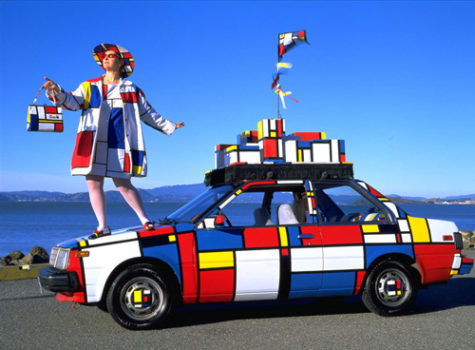
Many people spend hours at a time in their cars which become like mini-homes. Like our homes, they become a reflection and extension of ourselves. Negative chi in cars has the power to create lasting damage and destruction to their owners and to others.
Some people talk to their cars, others give them names and personalize them. In some parts of the world they are blessed. Negative energy breeds negative response, so we should aim to build up a caring relationship with our cars.
For our de-clutter activity today, go out to your car and take a good long look. Does the outside look good and is the inside a mess? Does it look like it belongs to a bag lady? Or maybe it looks like it just came back from a mud wrestling contest. This car is your best friend. If your best friend arrived at your house, looking like that, what would you do?
So now you know what needs to be done, don’t put it off for another minute. Just do it.
Remove Hazardous Elements from Health Area
General Health area:
Wood will uproot the earth in this area, so get rid of anything symbolizing wood here. This means green items too! Small plants are the exception and can stay.
Tall rectangular objects and columnar objects don’t belong here.
Spiral staircases are a doozy – the chi keeps falling through, and with the spiraling pattern the chi gets dizzy and disoriented. You can counteract this effect by painting the underside of the stairs with the color of the area you are in, or place mirrors under the stairs to reflect the chi back up.
From Move Your Stuff, Change Your Life
by Karen Rauch Carter
Note:
If you are unsure of where the health area is, see these posts:
- Radical Self Care Project Overview by shirleytwofeathers - No Comment
- Radical Self Care Image Gallery by shirleytwofeathers - No Comment
- It’s A Wrap by shirleytwofeathers - 3 Comments
- Something To Consider by shirleytwofeathers - 1 Comment
- Nurturing Your Precious Self by shirleytwofeathers - 3 Comments
me: Make Your Own Violet Fire
Abdulrahman: Money Chant – Very Fast
Shirley Twofeathers: It’s A Wrap
Daniel Knirs: It’s A Wrap
Shirley Twofeathers: It’s A Wrap
